…Canadian wildlife is in good hands!
We closed last year with many wishes for helping wildlife. We started 2023 with evidence-based solutions to make those wishes come true.
Last year alone, the Canadian Wildlife Federation invested $23.9 million in charitable programs in areas such as freshwater habitat conservation, endangered species and large marine animal protection, education programming, pollinator habitat, native grassland conservation and so much more.
Let’s take a look at what your support for the Canadian Wildlife Federation has done so far in 2023.
Thanks to you…
Bats Can Have Better Homes
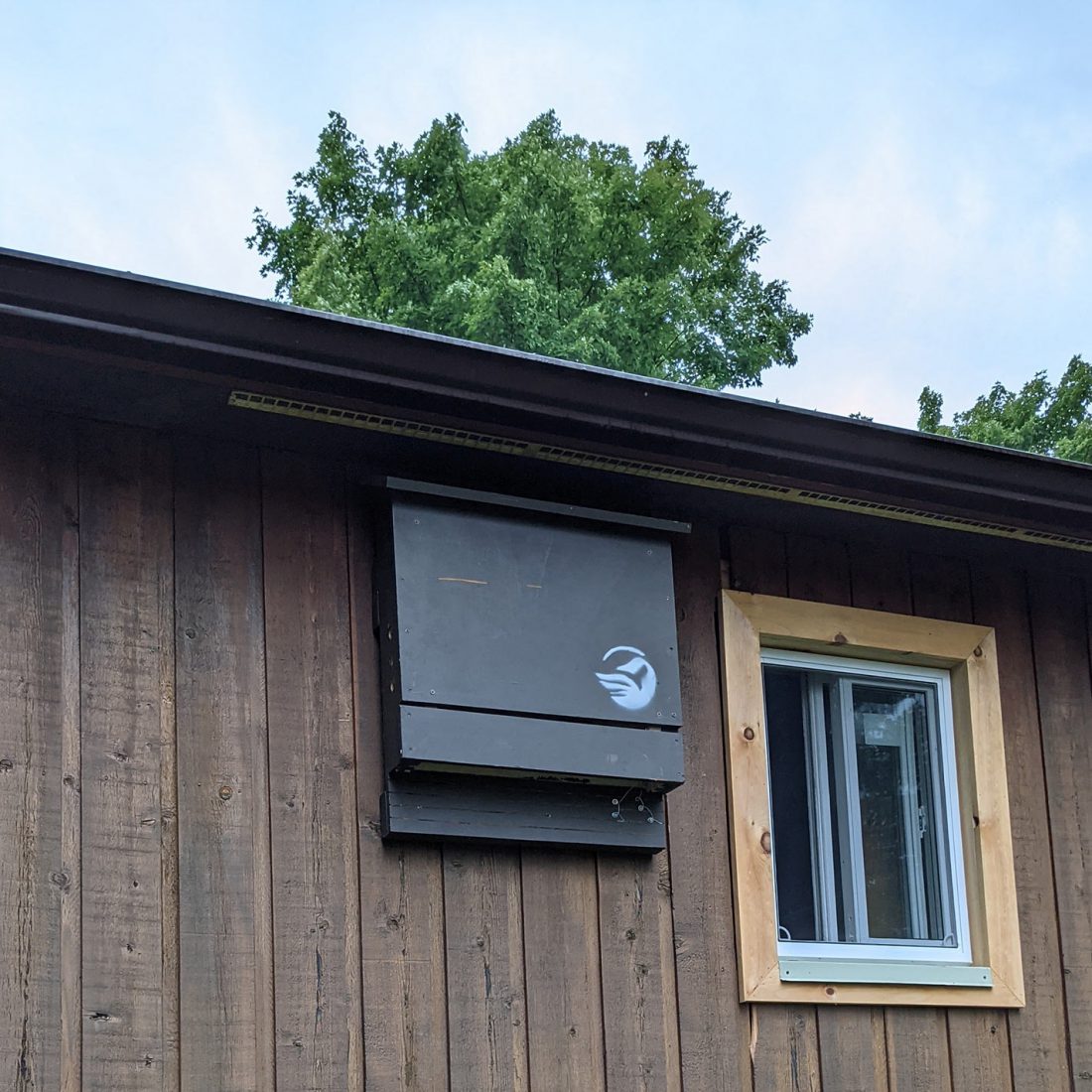
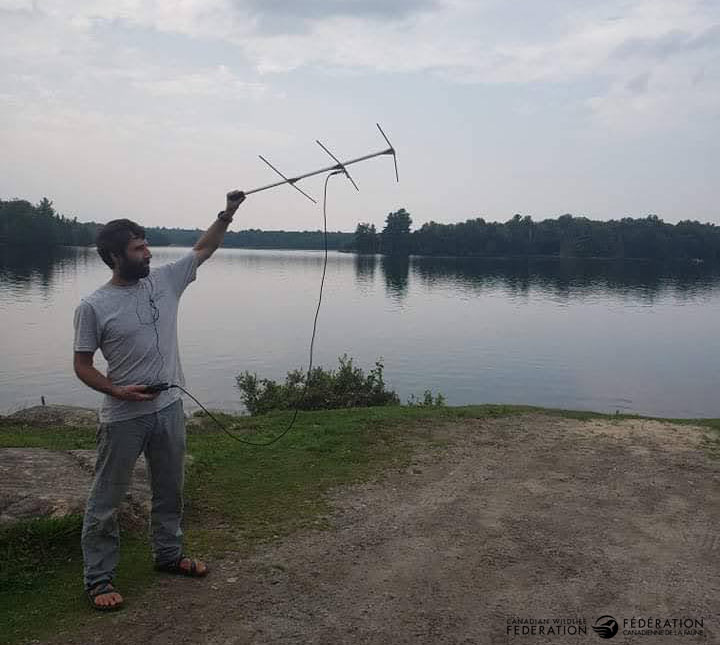
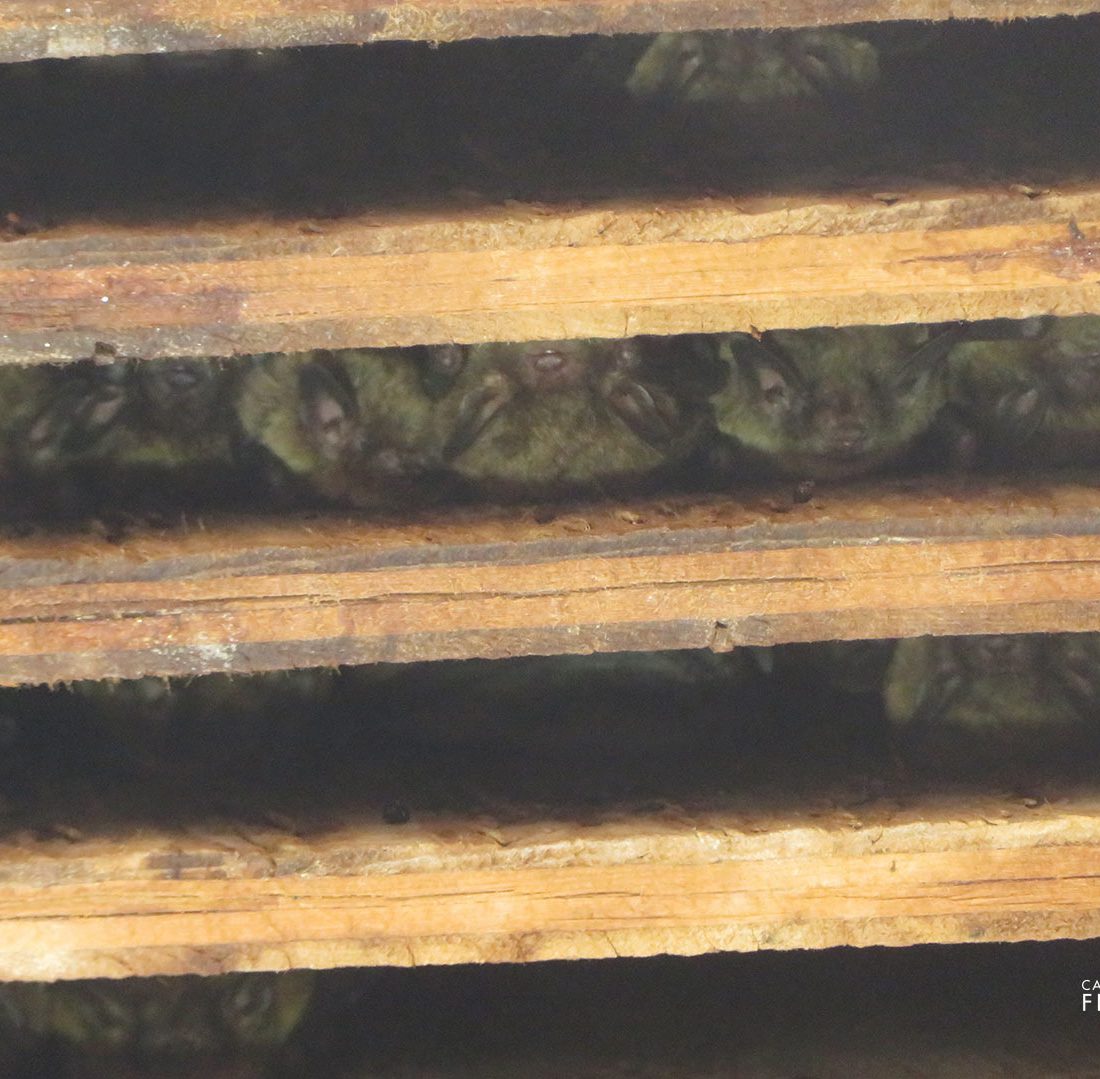
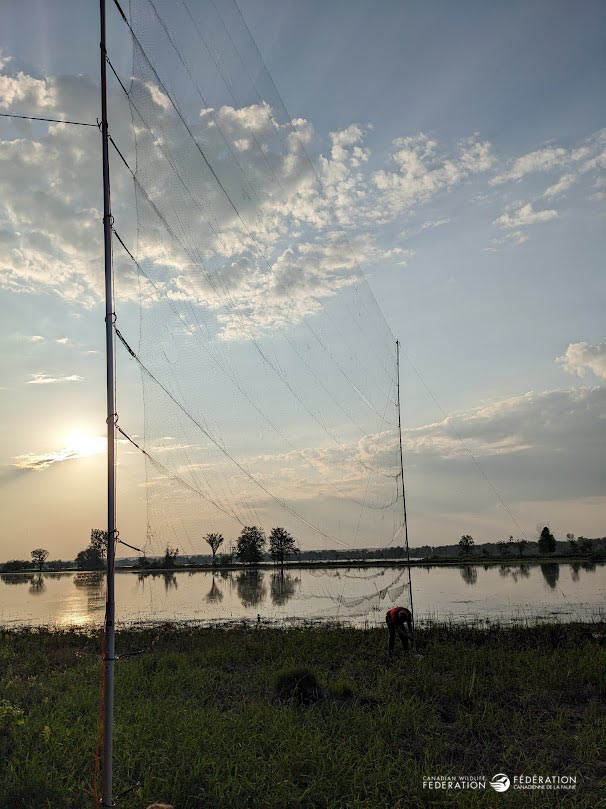

Due to human influences, nearly half of our Canadian bat species are now at risk of extinction. Throughout the summer, we’ve been busy studying one of Canada’s most unique mammal to help reduce some of these key threats.
This is the final year of our Canada bat box study – the first nation-wide investigation into what makes a bat house more likely to be used by bats. With this research, we aim to give Canadians the tools to be able to provide valuable habitat for these at-risk small mammals. Data analysis is currently underway, with final results to come in the spring. What we’ve found so far is that bats seem more likely to use bat boxes that have multiple, larger boxes, installed on a building. They also show preference for bat boxes that have been erected for a longer period of time. This project was undertaken with the financial support of the Government of Ontario and Environment and Climate Change Canada.
Along with the national study, we carried out another year of tracking bats from a maternity colony to their alternate roosts, including some bat houses we installed in 2021. After capturing and releasing more than 80 bats at a known site, we were able to locate several new (and large) roosts – including one of our bat houses! Special thanks to Karen Vanderwolf, Liber Ero Fellow at the University of Waterloo, for leading the national bat box project in Canada in partnership with the Canadian Wildlife Federation and the Wildlife Conservation Society.
We’ve also been busy spreading the word for bat conservation through positive social media messaging, dispelling incorrect myths and offering accurate information at HelpTheBats.ca.
Learn more about how the Canadian Wildlife Federation is helping Canada’s at-risk bats >
Twelve Million Observations Have Been Made on iNaturalist Canada
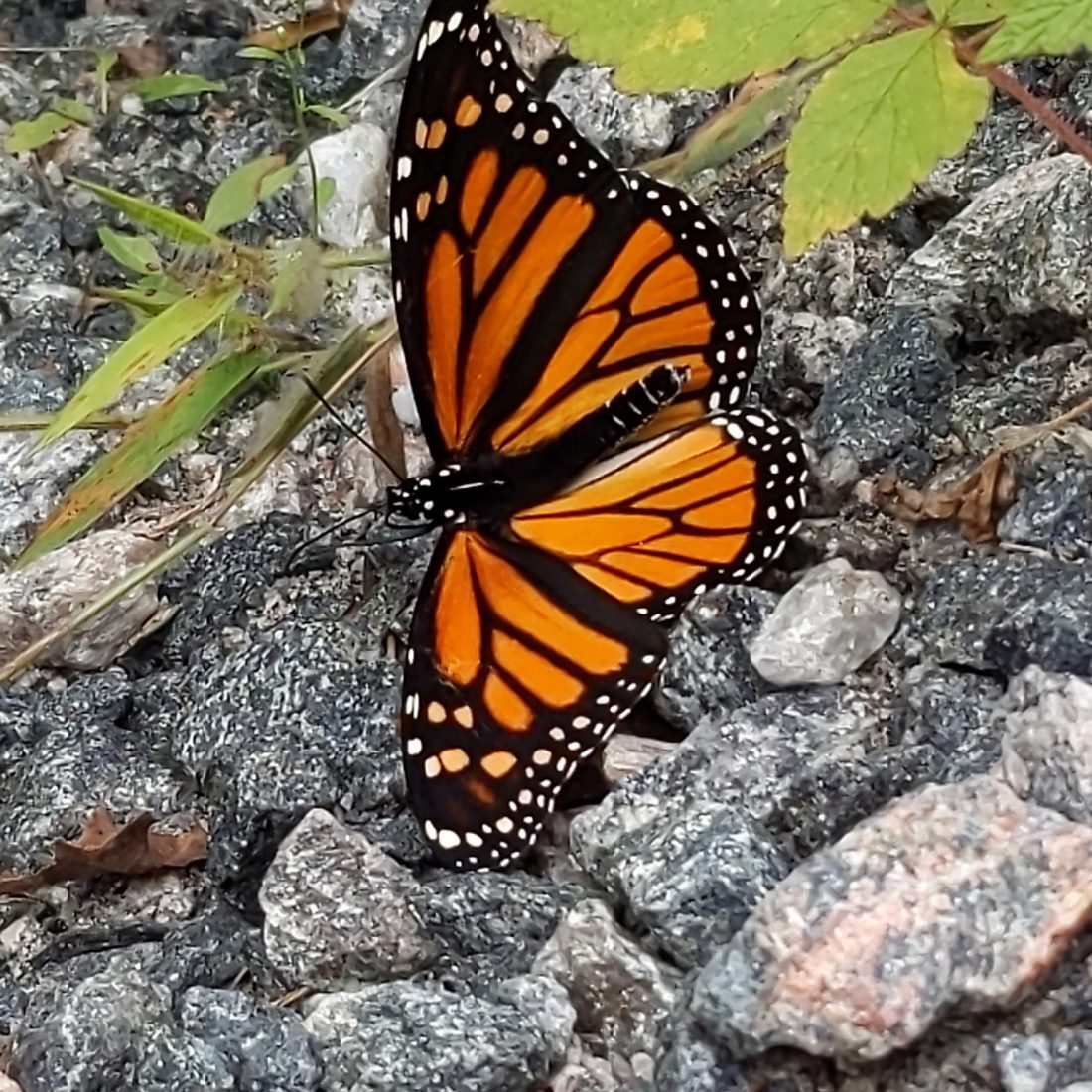
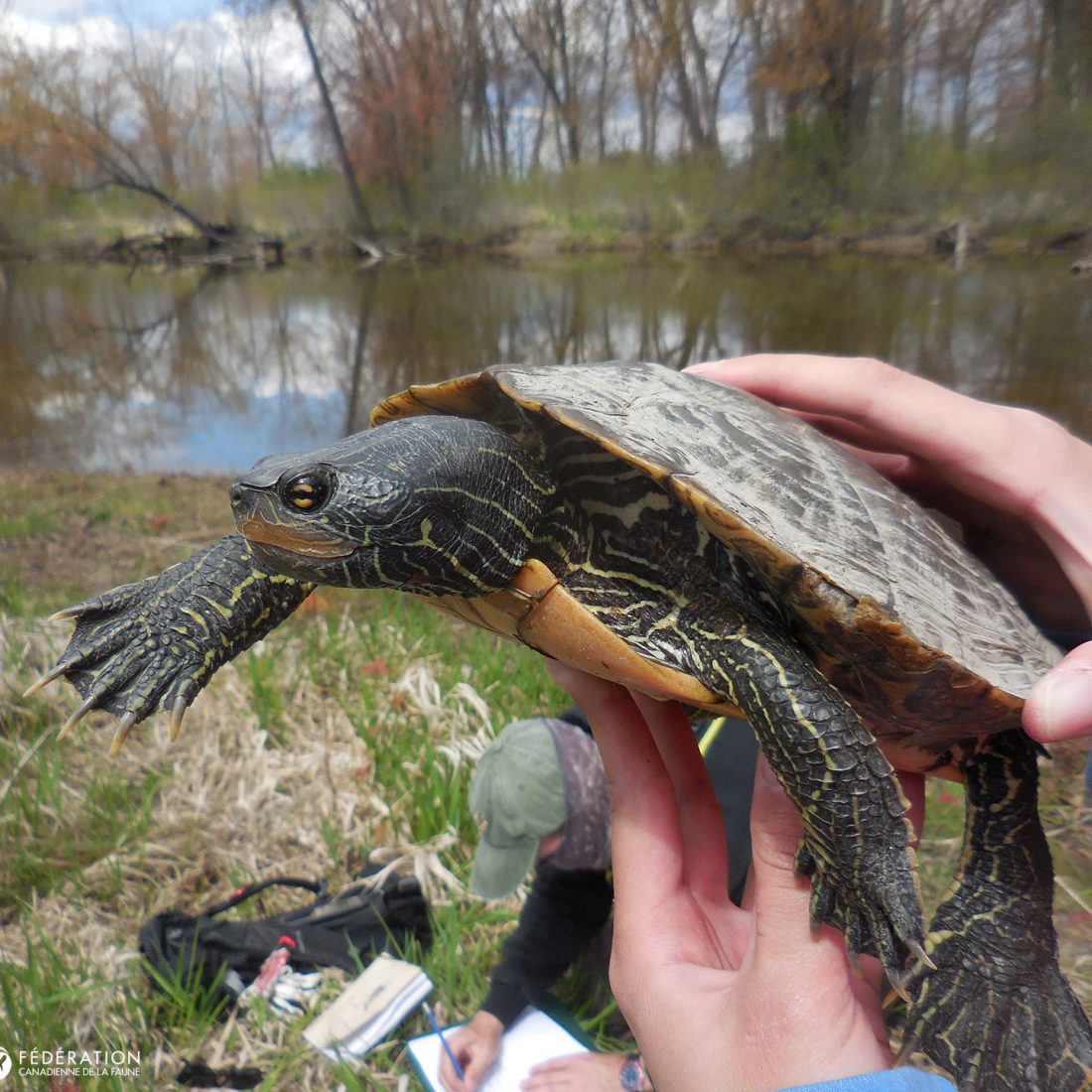
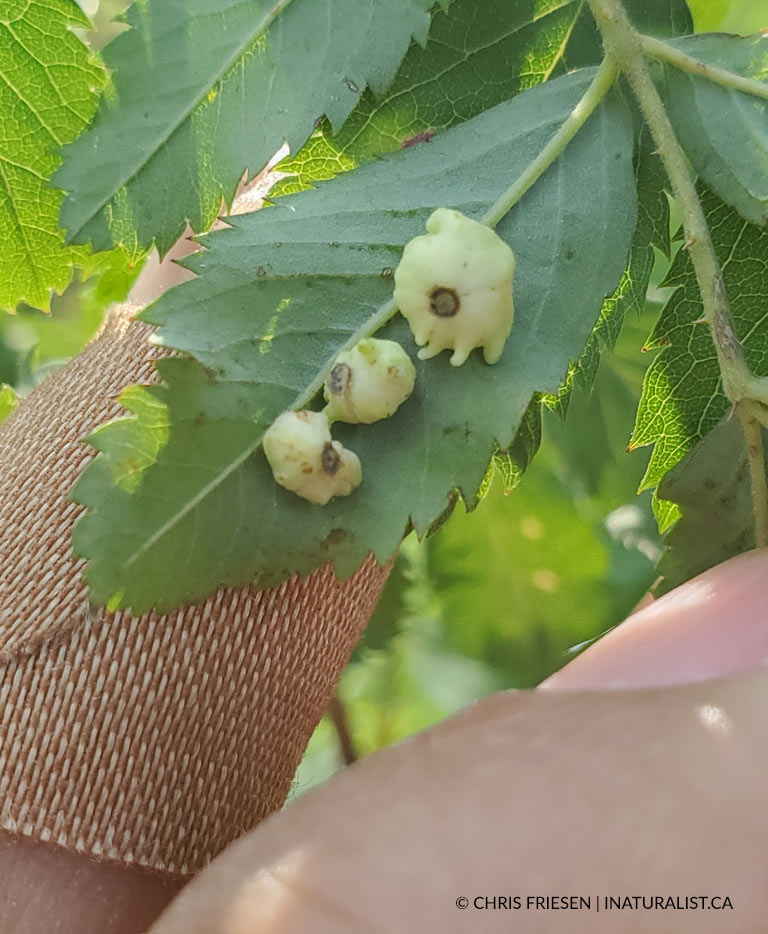
The Canadian Wildlife Federation continues to lead iNaturalist Canada, which hit a huge milestone this summer. Thanks to dedicated community scientists we greatly surpassed 10 million observations. Having delivered webinars, guides and downloadable resources, CWF has armed people with knowledge and expertise to take iNaturalist to a whole new level. It is now the largest platform to record all wildlife species in Canada, and around the world. With such a breadth of contributions, some groundbreaking contributions to conservation have been made, including:
- A peer reviewed publication by CWF using iNaturalist photos to investigate the incidence of boat strikes on Northern Map Turtles.
- An in-depth investigation into Manitoba’s Rose Gall Wasps using iNaturalist Canada, including the finding of a species new to Manitoba.
- Nearly 240,000 observations of species at risk in Canada collected through the Species at Risk in Canada iNaturalist project.
CWF led the Canadian push in the global City Nature Challenge, where 43 Canadian cities and nearly 4,000 observers competed amongst 460 cities around the world to record wildlife observations in the spring. Collectively uploading over 75,000 observations in Canada, we helped further our knowledge of biodiversity during the friendly competition.
By making a concerted focus to highlight the endangered Monarch Butterfly and strategic partnerships, iNaturalist now contains more than 36,000 Monarch observations, making this the fourth most observed species in Canada. That’s pretty good for an insect that’s only around for four to five months of the year! This information helps researchers and decision makers in assessing the Monarch’s yearly population and migratory success.
Learn more about how the Canadian Wildlife Federation is helping biodiversity through citizen science >
One Step Closer to Removing Aquatic Barriers in Canada
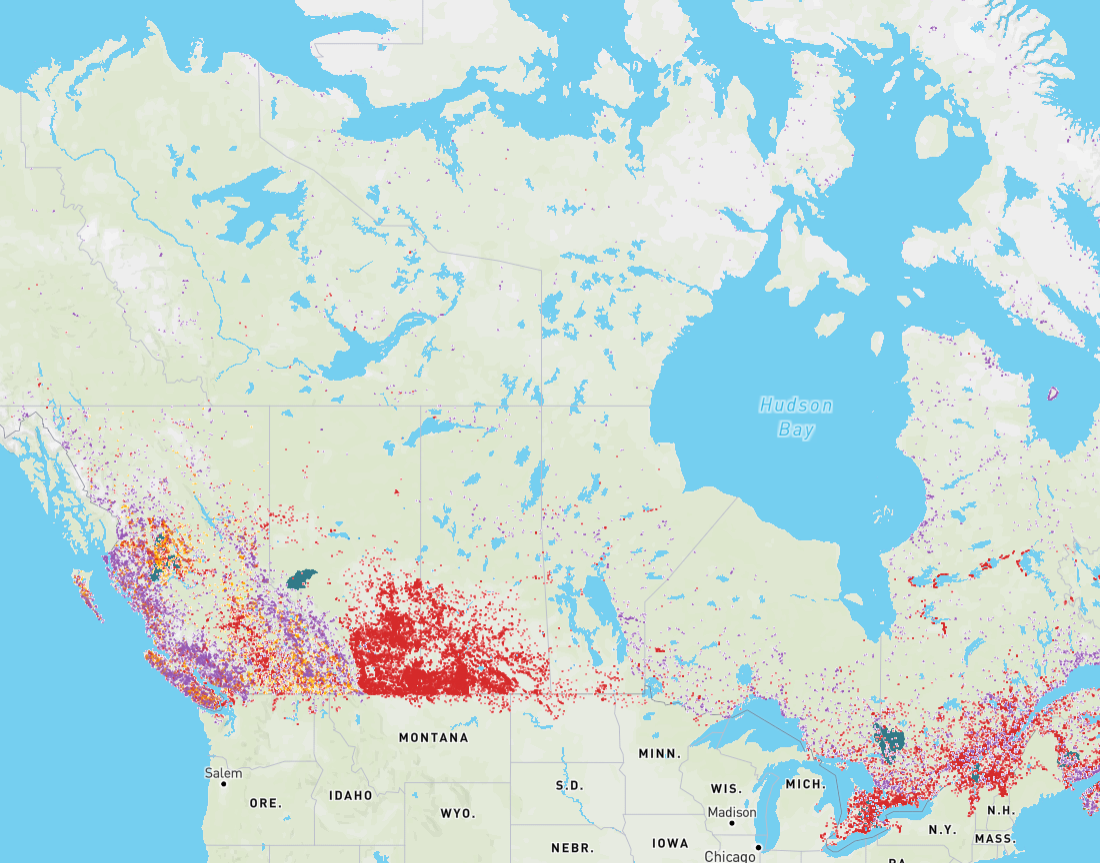
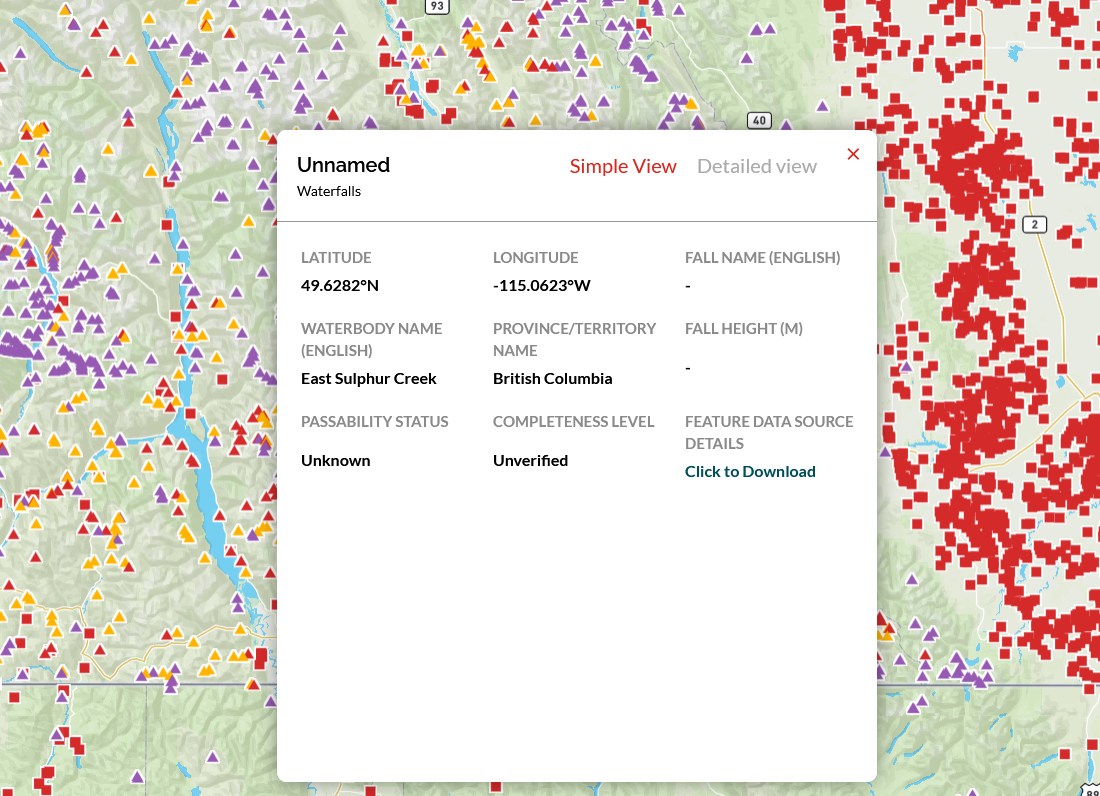
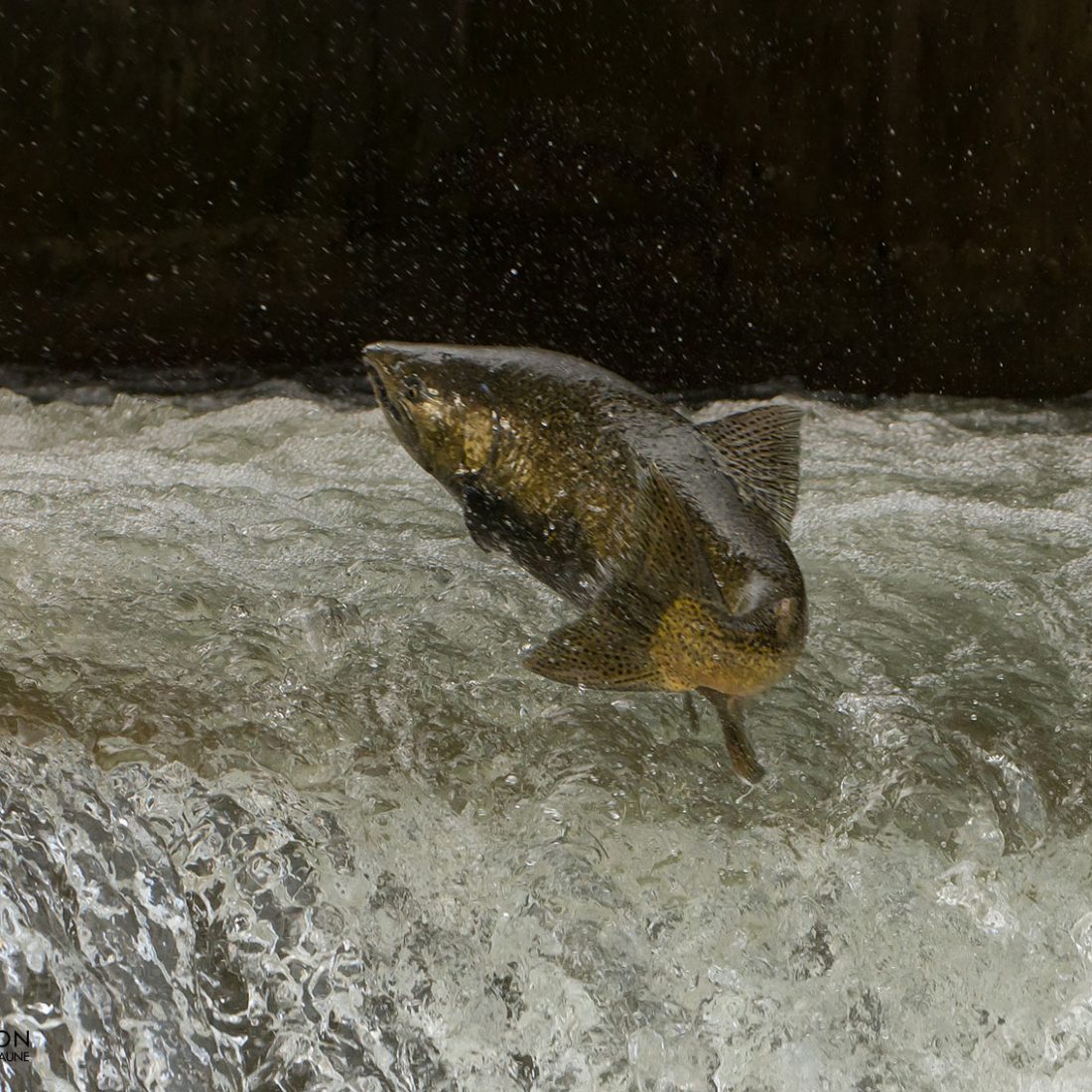
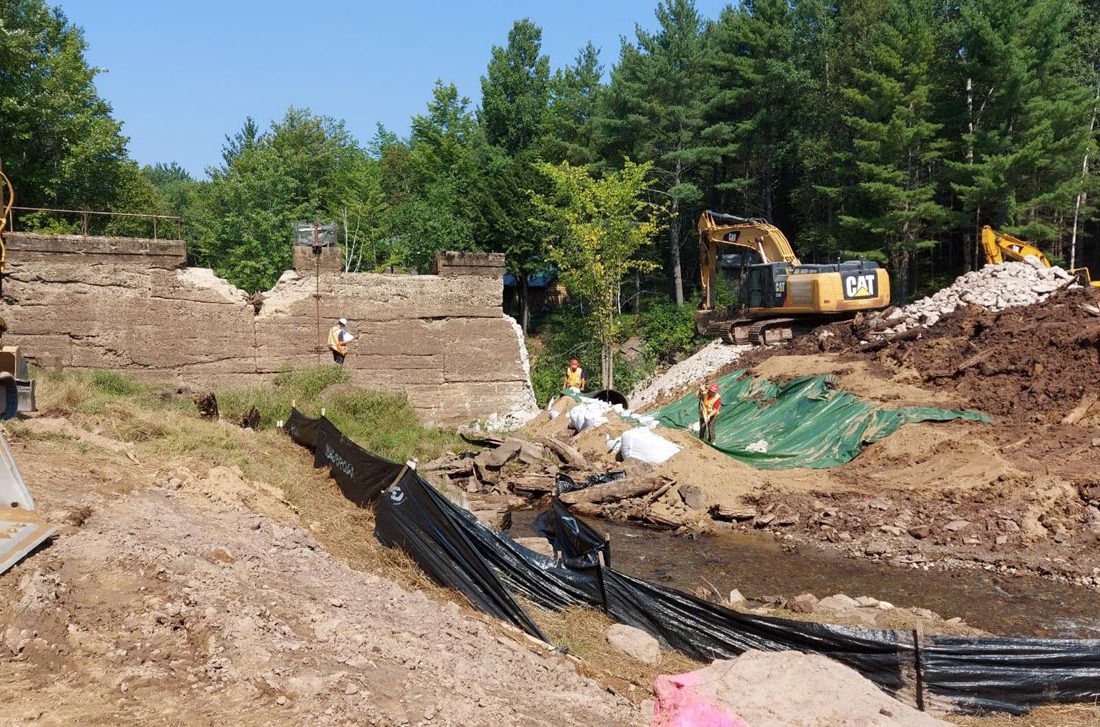
The first version of the Canadian Aquatic Barriers Database (CADB) was released in September 2022 with 36,796 dams (and associated structures), 22,194 waterfall and 408 fishways. Is it a perfect dataset? No! Gaps still exist in the data, but it does represent the most comprehensive source for aquatic barrier data at a national scale.
We are working hard to fill these existing data gaps and make the CABD data layers even better. The team has spent months performing an extensive review of additional data sources and over the summer we were able to fill in information gaps for over 2,800 structures in the CABD, which help support conservation work and infrastructure management decision making in the future.
The CABD is a multi-year project that is supported partially by financial contributions from Fisheries and Oceans Canada. The database is also funded in part by the RBC Foundation in support of RBC Tech for Nature.
Learn more about how the Canadian Wildlife Federation is helping our freshwater systems with Canadian Aquatic Barriers Database >
Canadian Conservation Corps Youth Have Completed Thousands of Conservation Volunteer Hours in 2023 alone!

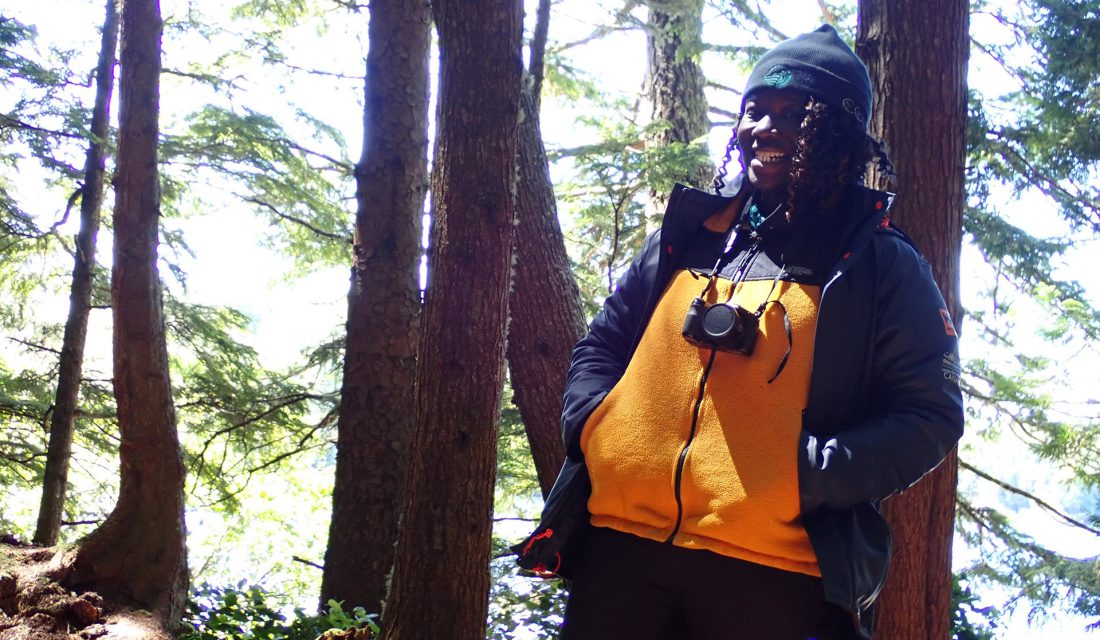
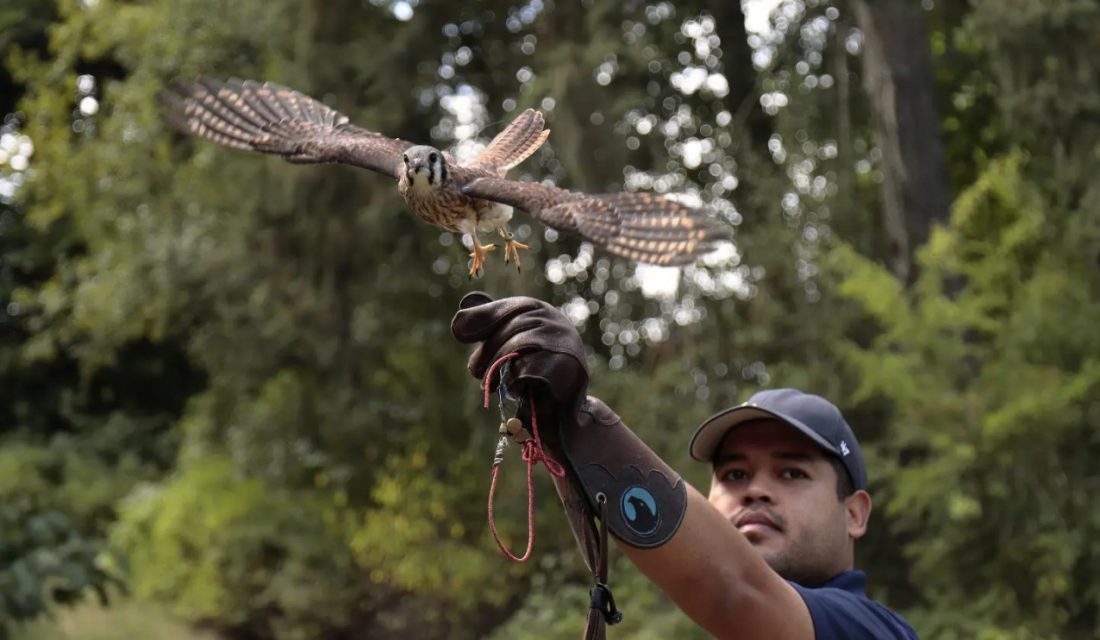
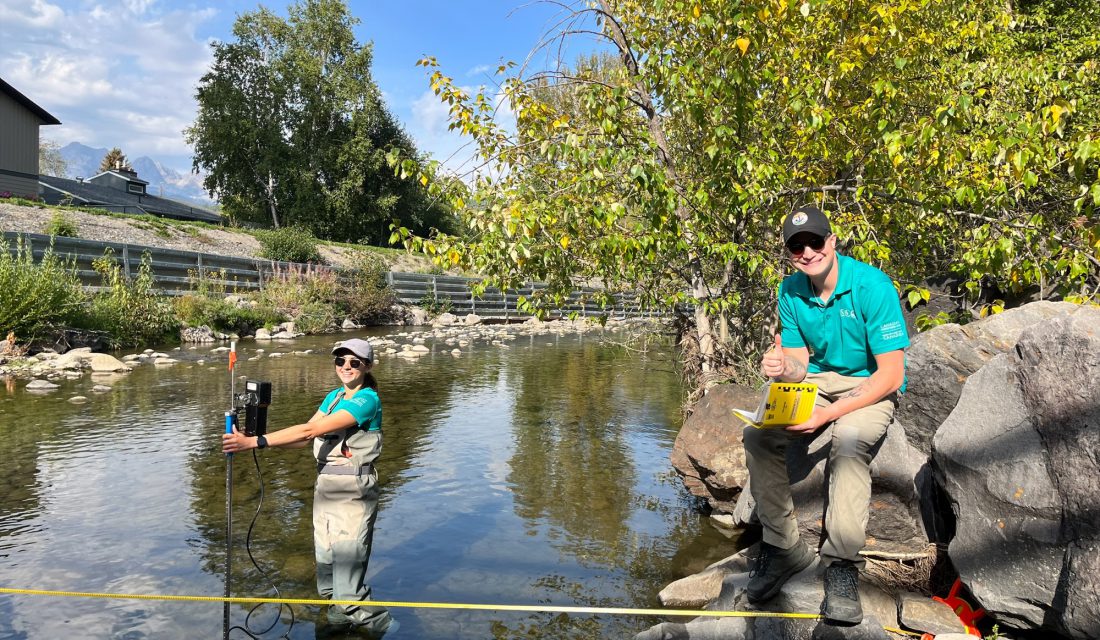
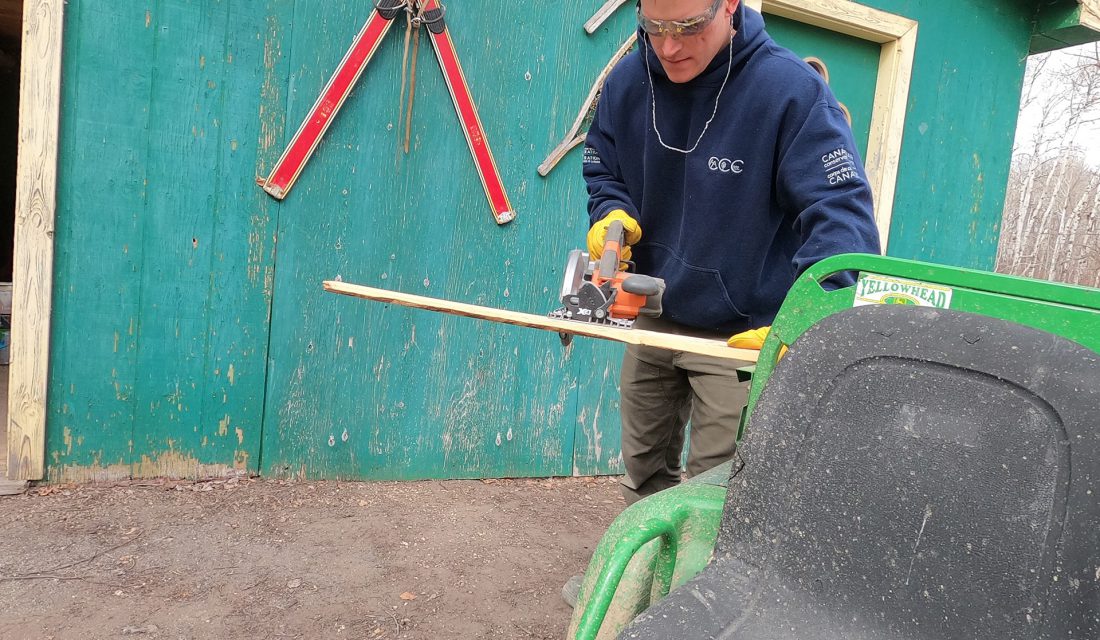

CWF’s Canadian Conservation Corps continues taking Canada’s youth aged 18 to 30 through a three-step program that immerses them in exciting hands-on conservation and environmental field learning, wildlife adventures and community impacts, collaborating with experts in a variety of opportunities. Since January of 2023 alone, CCC has:
- Helped 20 participants complete their Stage 3 outreach, service and communicate impact service projects. More than 100 have been completed since the program began in 2018!
- Enabled 3,323 service hours to be completed this year, with a program total of more than 1.5 Million!
- Collaborated with 94 organizations across Canada to place youth in three-month immersive field learning experiences.
- Started an entirely volunteer operated program called CCC Flex. This is a drop-in program that will allows youth to meet like-minded peers in their community as they participate in amazing outdoor adventures and meaningful conservation service projects that benefit wildlife.
The Canadian Conservation Corp is a program developed by the Canadian Wildlife Federation and funded in part by Canada Service Corps, a national movement that empowers youth aged 15–30 to gain experience and build important skills while giving back to their community.
WILD Outside has reached even more teens

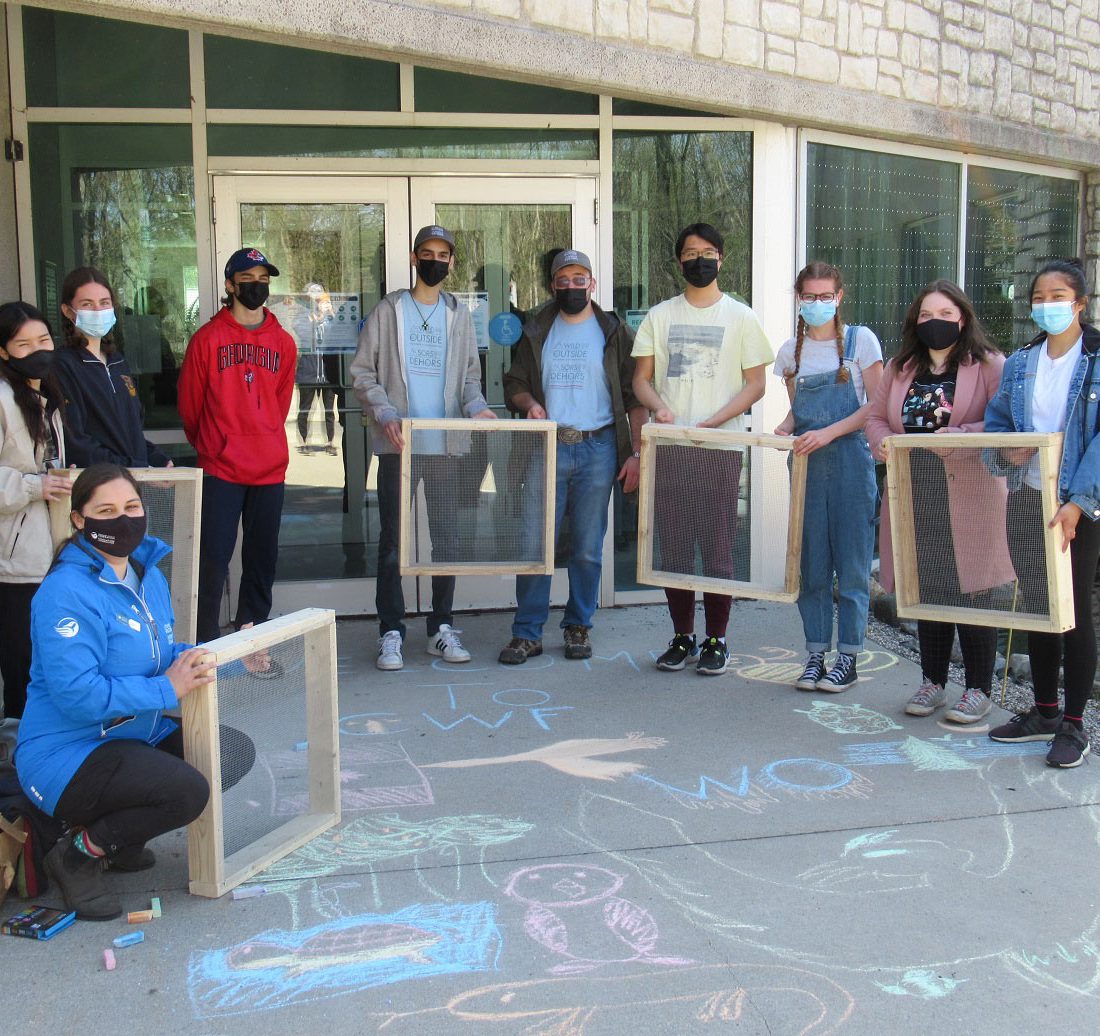
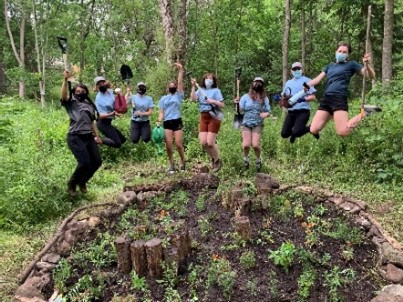


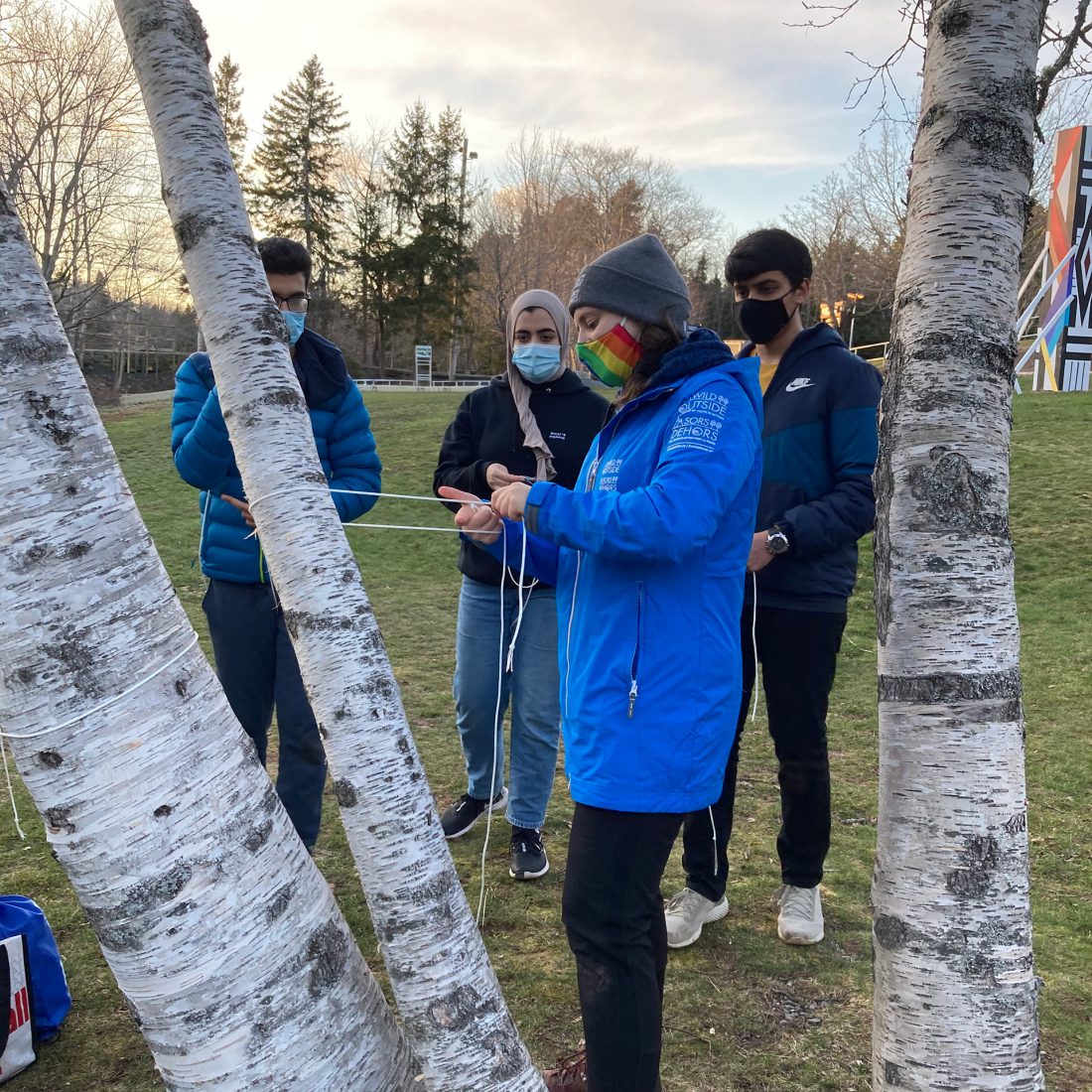
Wild Outside is a program for youth aged 15 to 18 that encourages them to get outside and develop a profound connection with nature. The team has been busy over the summer leading lots of impactful events with youth in their communities. WILD Outside participants have dedicated their time to conservation service projects and outdoor activities including canoeing, kayaking, intergenerational gardening projects, species-at-risk monitoring and much more!
Here are the WILD Outside 2023 stats to date:
- 588 participants registrations (and re-registrations)
- 414 events (service projects, outdoor activities, workshops and more)
- 128 outreach events reaching 11,361 people.
- 12,000 participant service hours completed.
WILD Outside was developed and delivered by CWF in cities coast to coast and is funded in part by the Government of Canada under the Canada Service Corps program.
Learn more about how the Canadian Wildlife Federation is helping education future conservationists >
More Freshwater Ways have been opened to allow for Fish Passage
The CWF Fish Passage group is completing four fish passage restoration projects this year. These projects are in the Elk, Bulkley, LOwer Skeena and Gold River watersheds and are done with support and funding from the Pacific Salmon Commission Southern Endowment Fund, BC Salmon Restoration and Innovation Fund, Environmental Damages Fund, BC Timber Sales and Province of BC.
As we continue to make strides on fish passage in target watersheds, we are also happy to applaud Tolko Industries Ltd. for taking on a number of fish passage crossings prioritized in CWF’s connectivity plan for the Horsefly River watershed, and Williams Lake First Nation, who are undertaking several fish and fish habitat related restoration initiatives in the watershed with funding from the BC government.
Earlier this year, CWF facilitated the development of a Watershed Connectivity Restoration Plan led by Lhtako Dene Nation. Field investigations are currently under way to identify priority sites for fish passage restoration there.
In preparation for next year, we are also developing designs for priority barriers in the Elk, Bulkley, Lower Nicola and Horsefly River watersheds. This work could not be possible without the continued support of CWF funders and our program partners including the Tobacco Plains Indian Band, the Office of the Wet’suwet’en, Witset First Nation, Lower Nicola Indian Band, the Province of BC, Fisheries and Oceans Canada, and countless other non-profit groups and individuals with a passion for ensuring watersheds remain healthy and accessible to fish.
Learn more about how the Canadian Wildlife Federation is helping increase freshwater access for our aquatic species >
Gardening for Wildlife has helped thousands of Canadians increase pollinator pathways
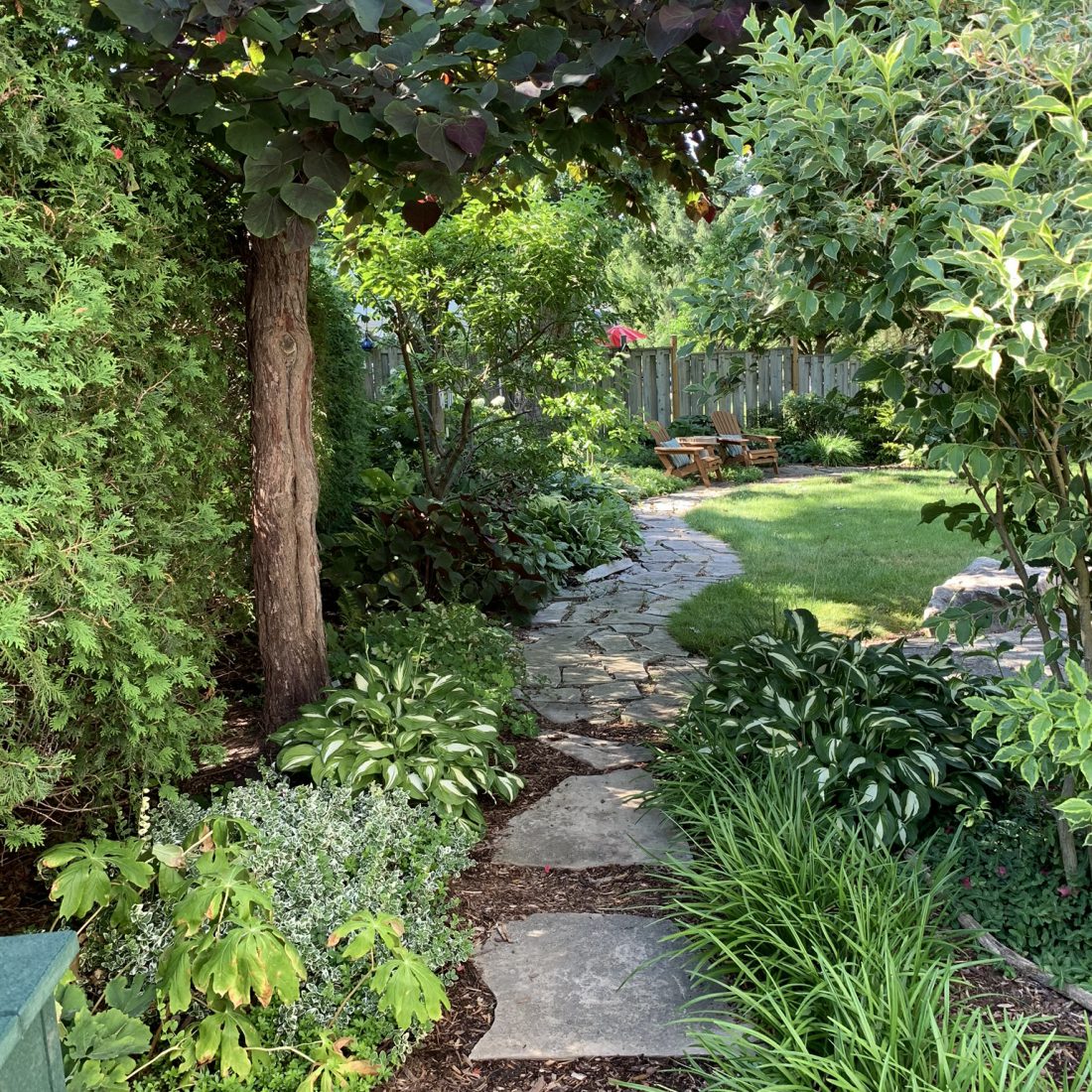
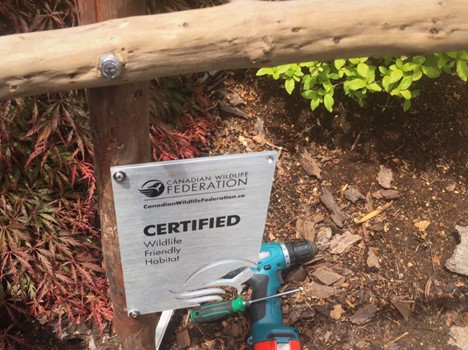
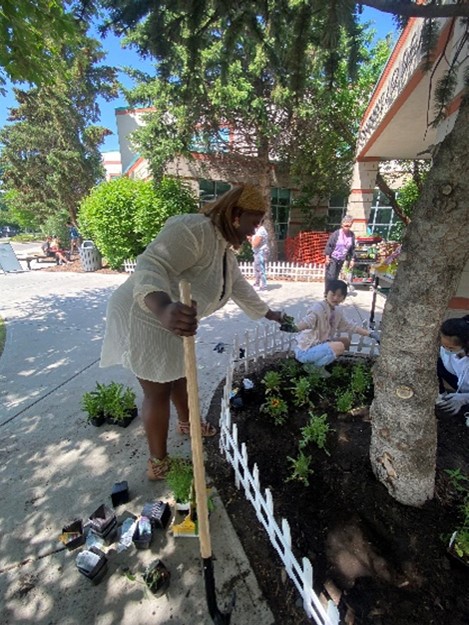
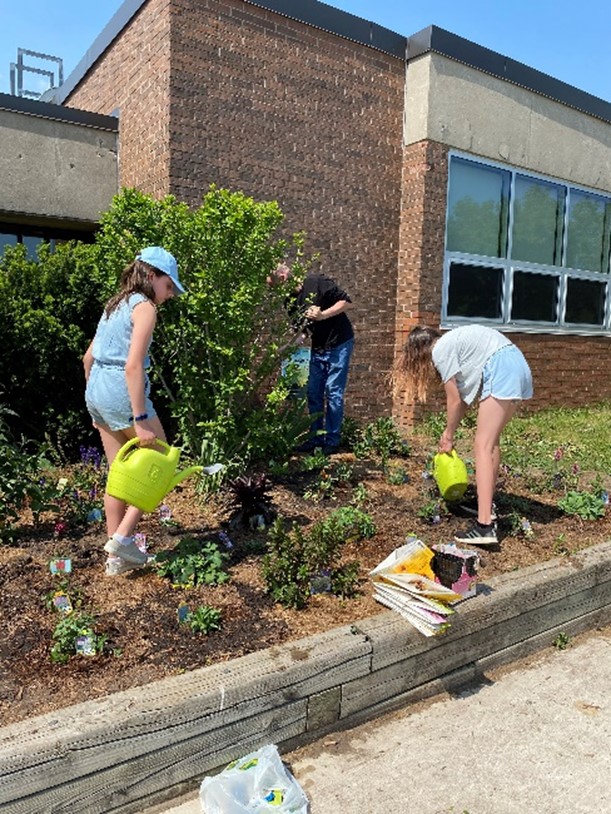
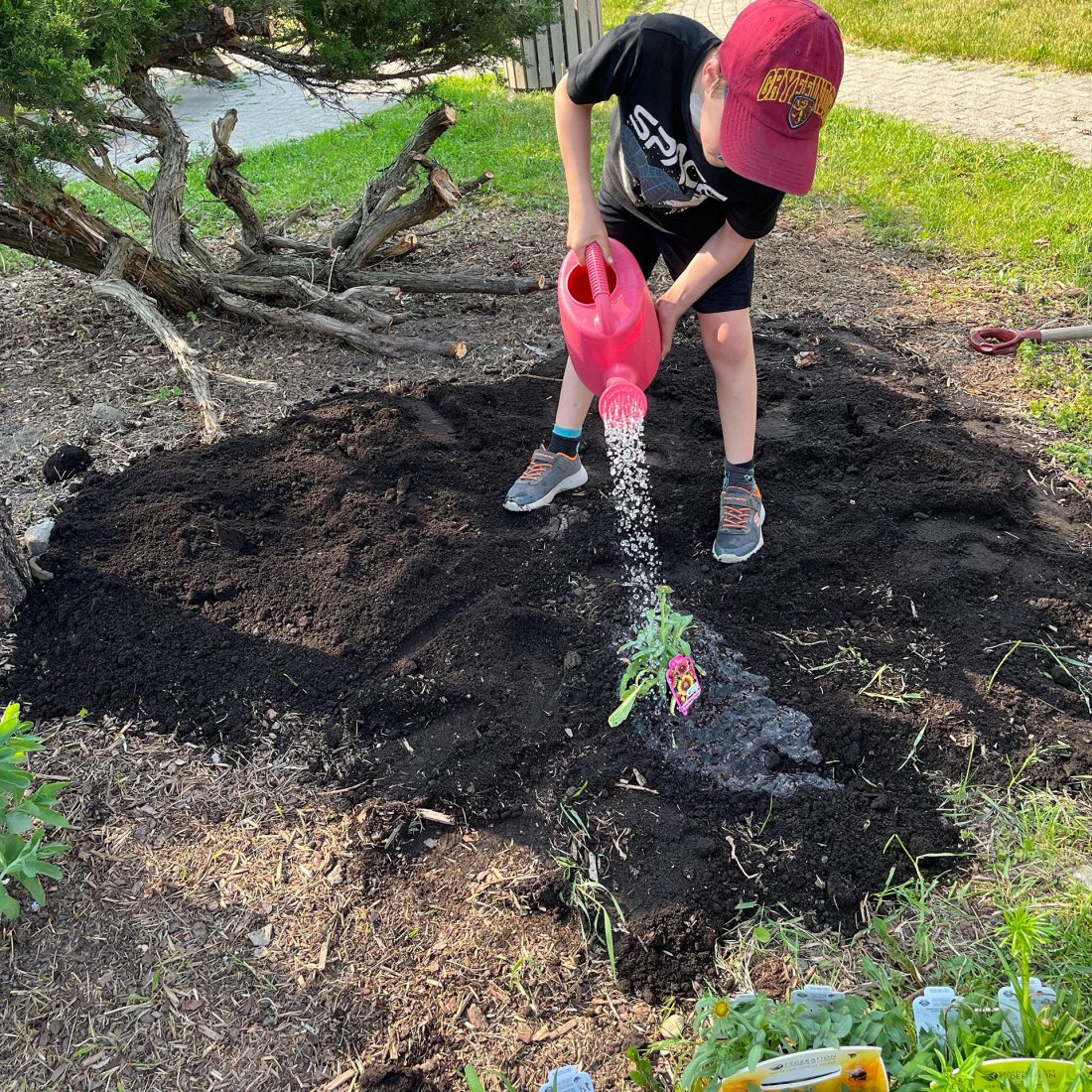
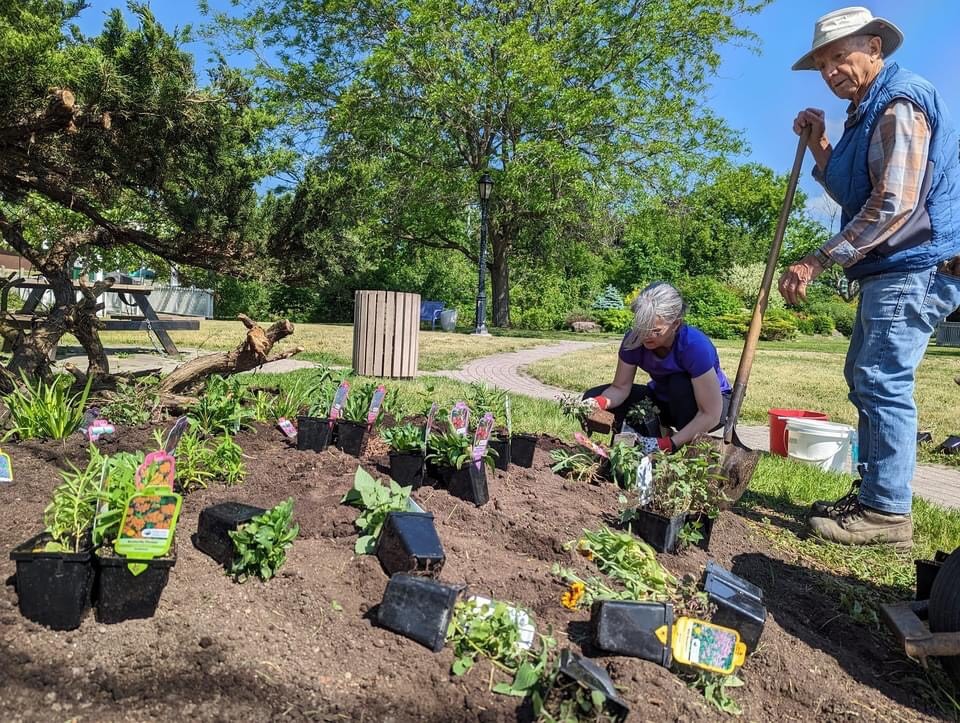
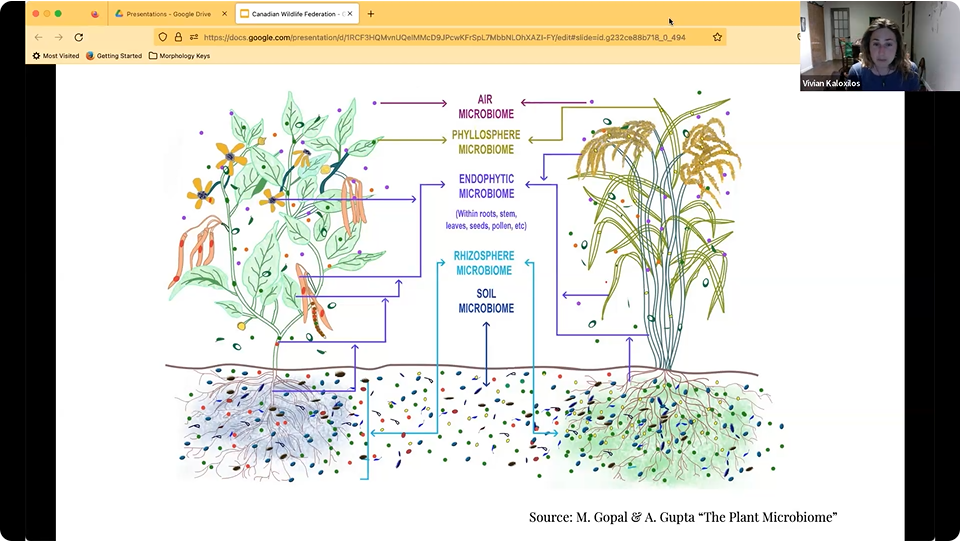
Creating wildlife-friendly spaces in our communities and workplaces continues with the Canadian Wildlife Federation’s many gardening programs.
- CWF’s school gardening program, WILD Spaces, provided 5,600 pollinator plant packs to 140 elementary school gardens in support of pollinator conservation.
- Through the funding received from the New Horizons for Seniors Program, CWF’s intergenerational program, WILD Generations, expanded to over five cities. Seniors and youth engaged in gardening workshops, created wildlife-friendly gardens, and built nesting boxes for wildlife habitat.
- The Gardening for Wildlife program had nearly 2,500 registrants for webinars with expert speakers, showing the interest and need for this information is still growing. Topics included creating pollinator gardens, supporting soil organisms for plant health and production, seed saving, flower flies and predatory wasps. CWF was also a presenter at an Ottawa garden festival and supported numerous on the ground groups across the country.
- So far this year we’ve added 951 certified properties as “Wildlife-friendly Habitat”. Many of these property owners have purchased a sign to celebrate their garden accomplishments and to indicate to their community the purpose behind their plantings. As one participant put it ”I received the beautiful ‘Certified Wildlife-friendly Habitat’ sign. It’s even nicer in reality than in the pictures. I’m proud to have it”.
Learn more about how the Canadian Wildlife Federation is helping wildlife through gardening >
Our Understanding of Stewarding Native Grasslands Has Increased with the Native Grassland Project
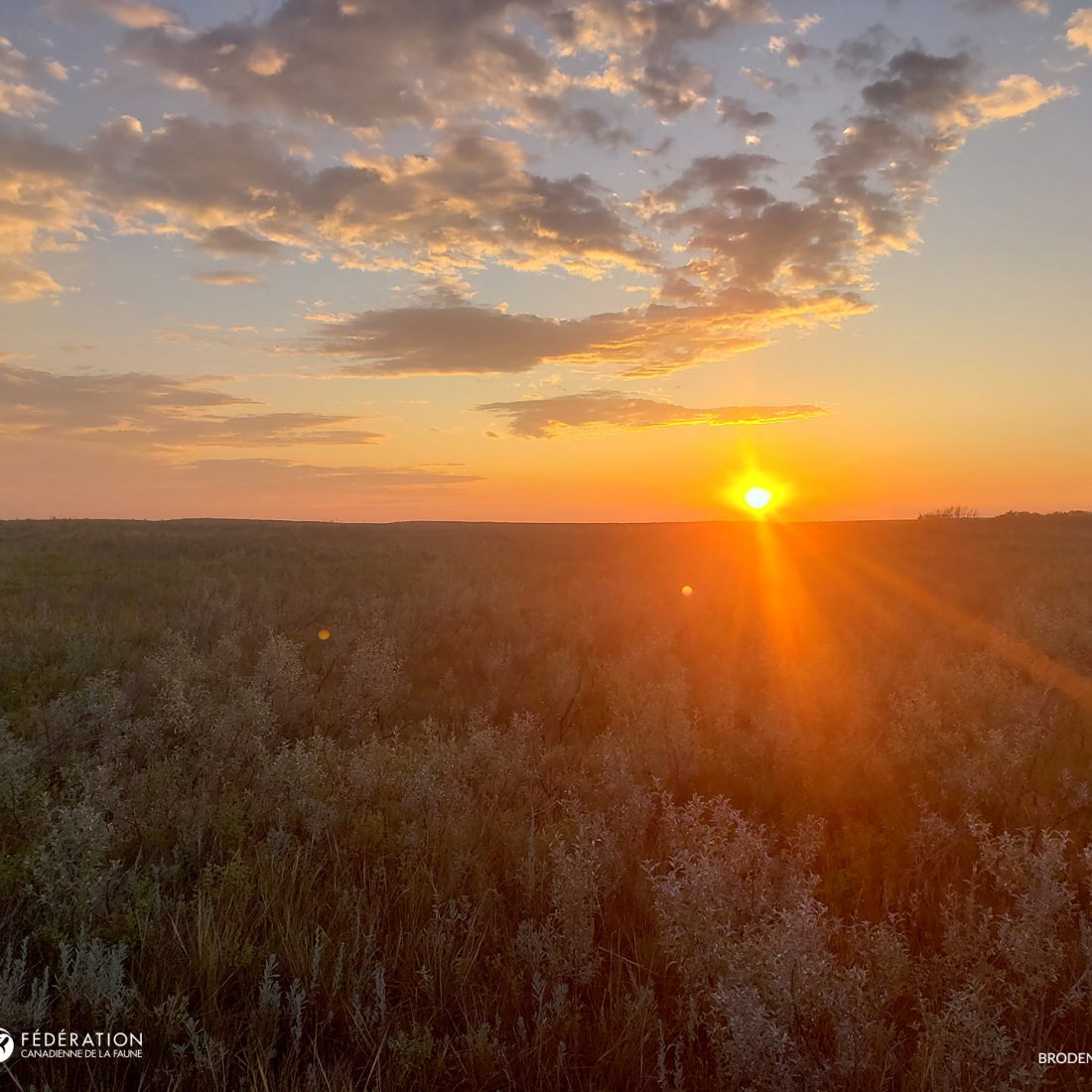


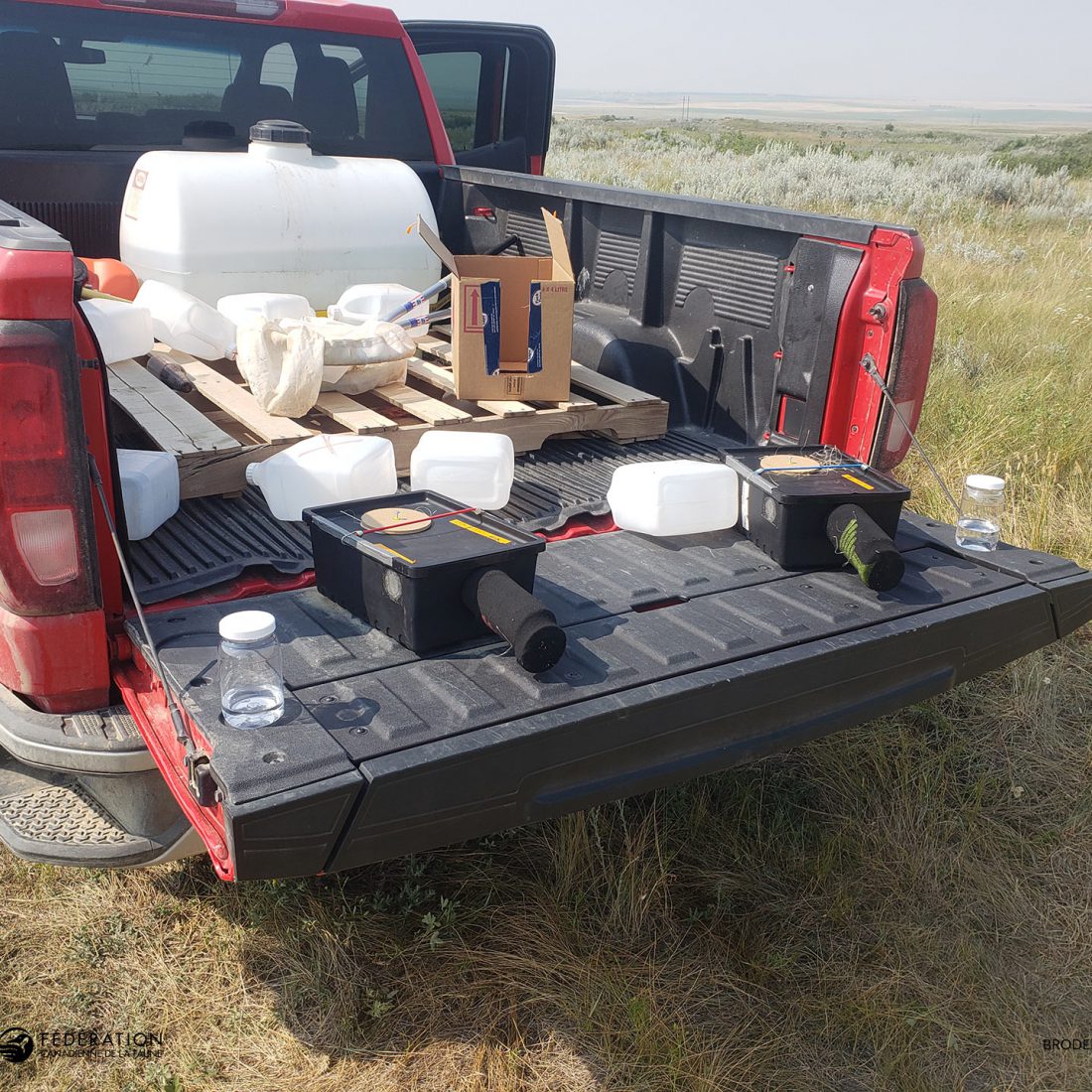


Getting an opportunity to work in your own backyard is not how we usually define experiential learning. For the amazing field technicians that we hired this summer for the grassland insect sampling crew as part of the Native Grasslands Project, all were from the prairies. With each transect on native prairie, the wilderness we are working hard to conserve, their sweep nets would brim with insect life. Big-headed flies, flower flies, native bees and grasshoppers of many shapes, sizes, and species.
The goal of our native grasslands project in Saskatchewan is to understand how stewardship of these rapidly disappearing natural habitats by ranching families supports the diversity of plants, insects and birds. Our crew collected a lot of information over the summer that we will spend a year or more analyzing. But of equal benefit is what our young field staff learned about their own backyards and an experience that will last a lifetime.
Thanks also our partners the Weston Family Foundation, Saskatchewan Stock Growers Foundation, AAFC and South of the Divide Conservation Action Program.
Learn more about how the Canadian Wildlife Federation is helping conserve Canada’s native grasslands >
We’ve helped thousands more Canadians improve their shoreline health for wildlife
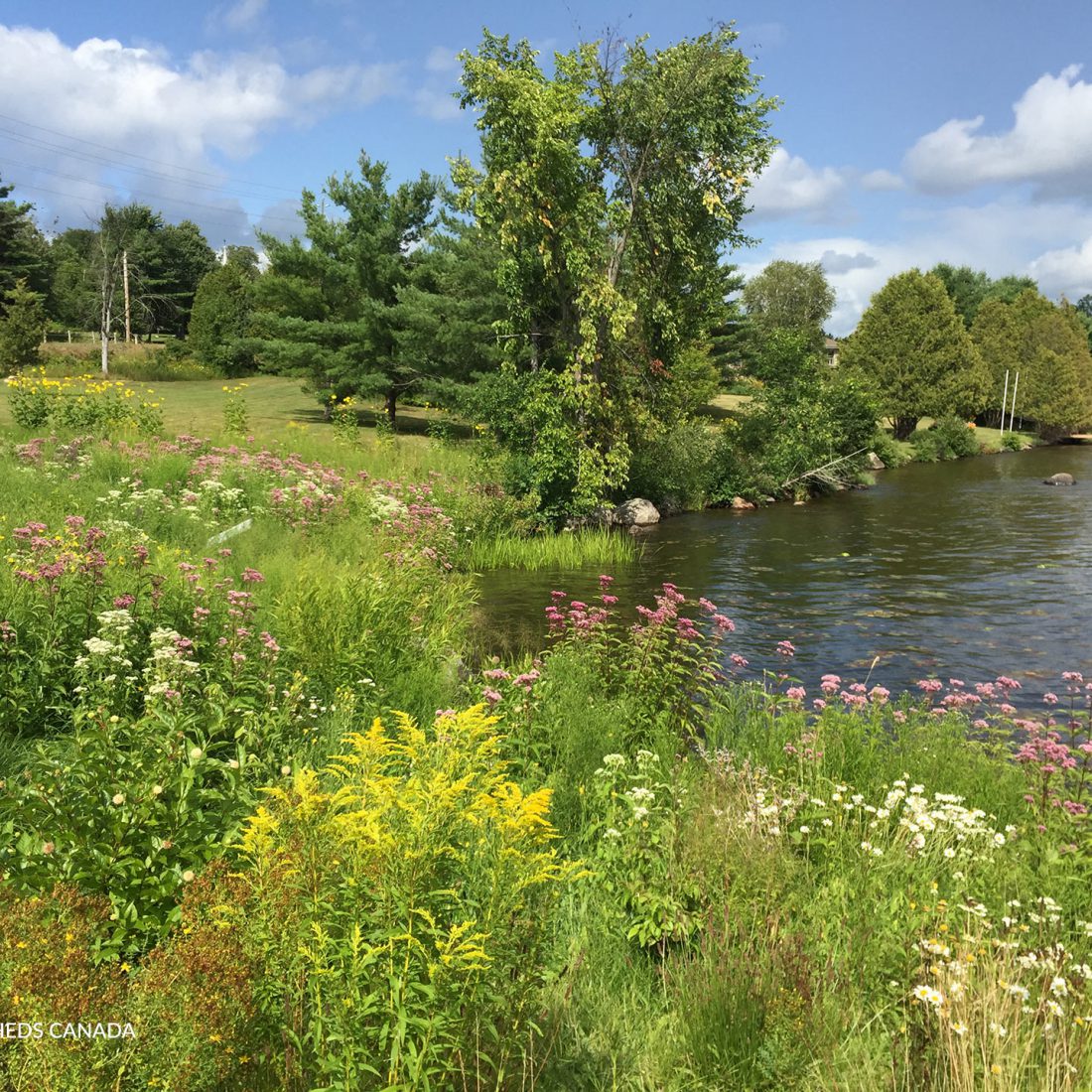
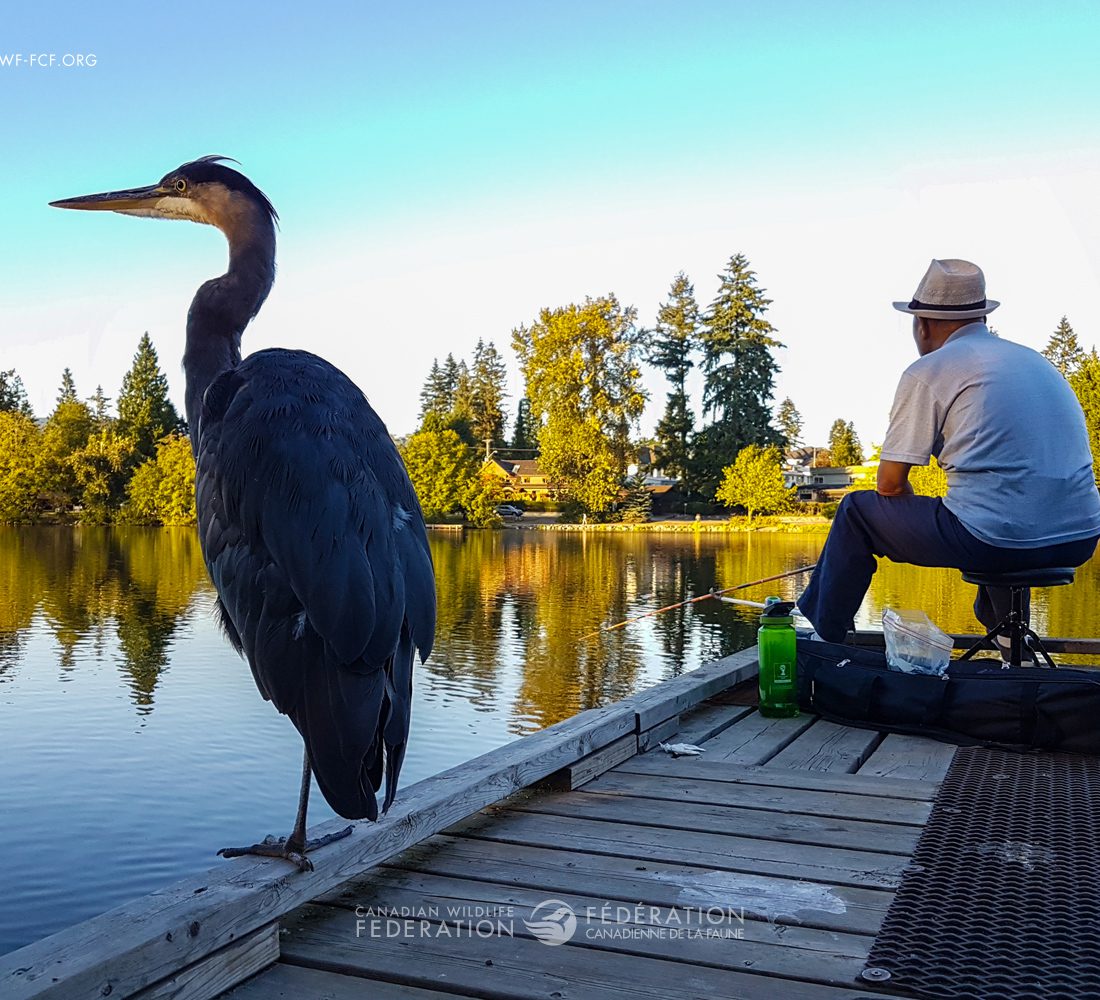
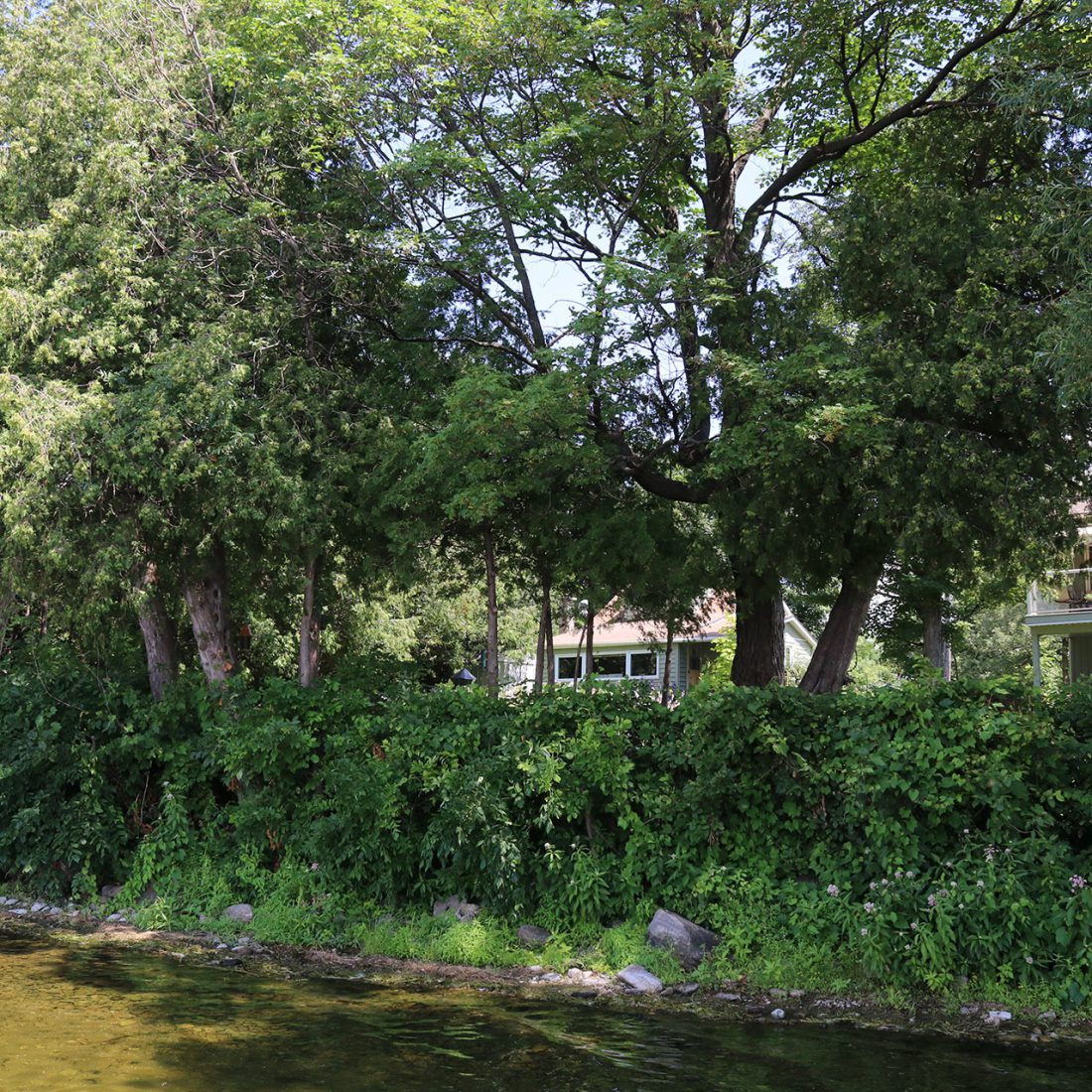
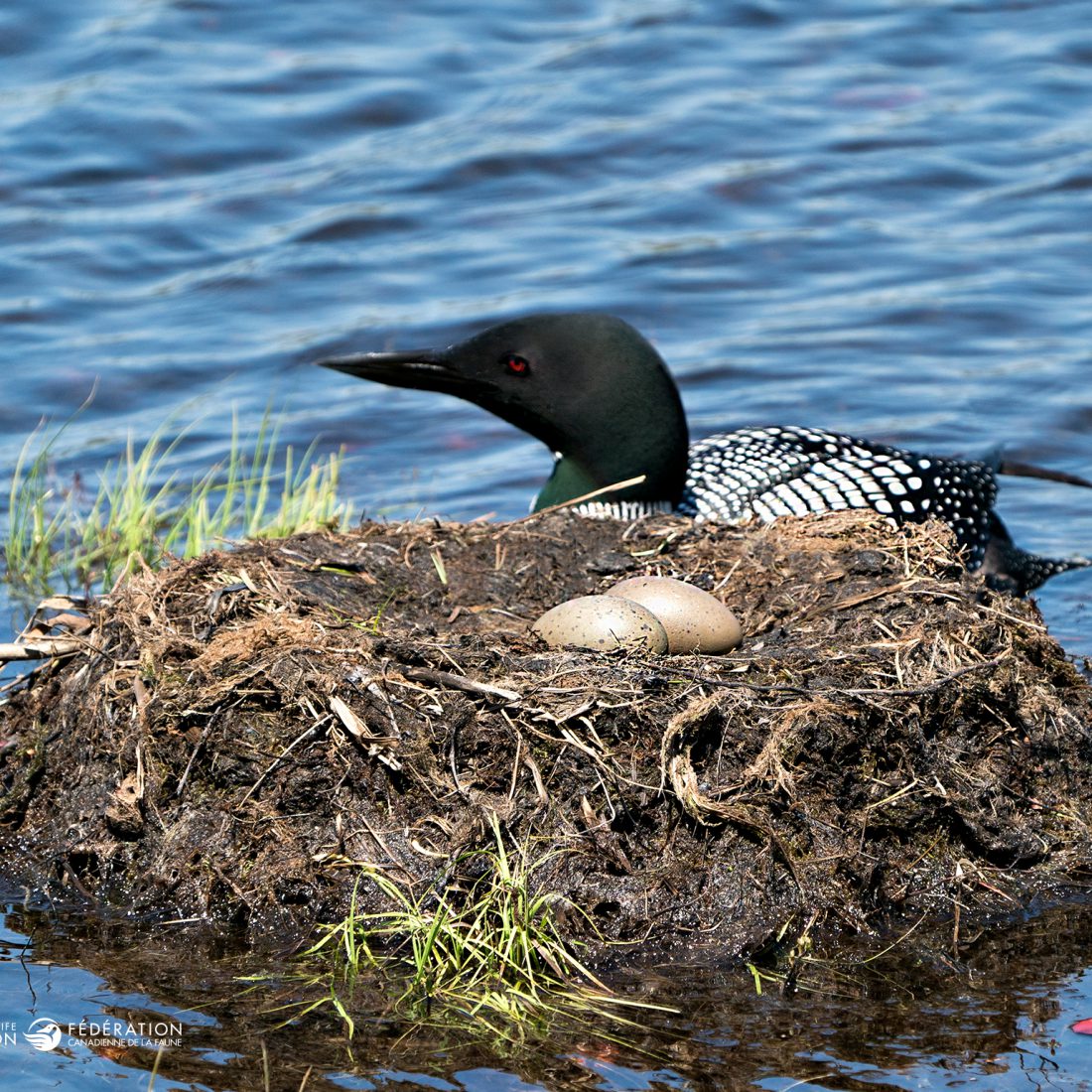
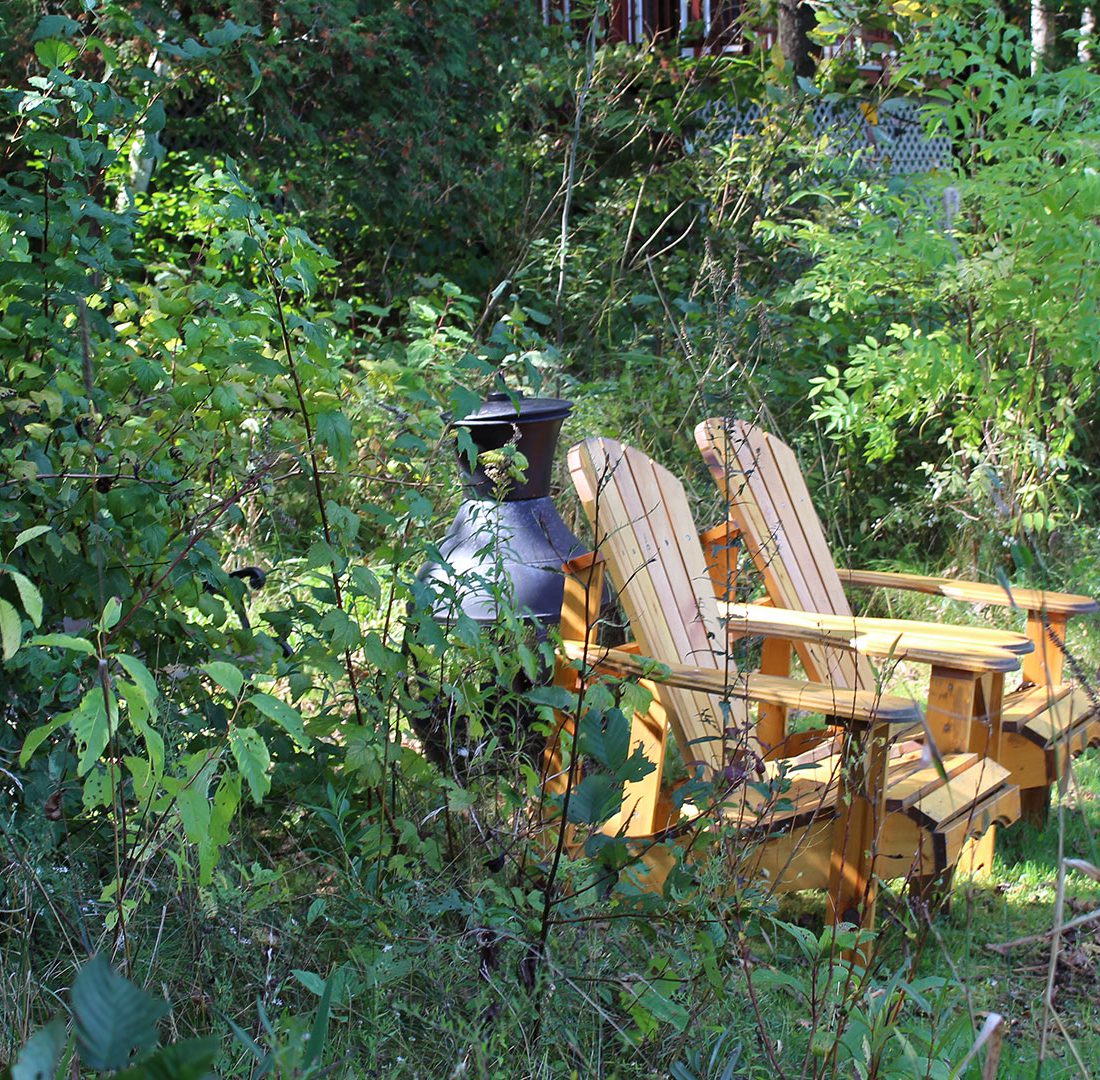

Love Your Lake, a joint program between CWF and Watersheds Canada, celebrated its 10th year assessing Canada’s lake shorelines in 2023. We would like to say a special thank you to our regional partners in Ontario and Nova Scotia, participating lake groups and to shoreline property owners for taking action to improve the health of Canada’s shorelines and lakes.
- Together approximately 3,000 shoreline properties were assessed in 2023 on 14 lakes.
- In total, over 49,000 shoreline properties have been assessed on 216 Canadian lakes since the program began in 2013. That’s over 49,000 shoreline property owners who have access to voluntary recommendations, specific to their own property, on how they can improve the health of their shoreline and their lake!
- We continued with our microgrant program, providing funding to seven lake groups for shoreline naturalization projects. These projects will restore even more of Canada’s shorelines thanks to many community volunteers.
Thank you for loving your lake! More information on this program and well as information on many shoreline-related topics can be found at LoveYourLake.ca.
Marine Wildlife Have a Better Chance of Survival
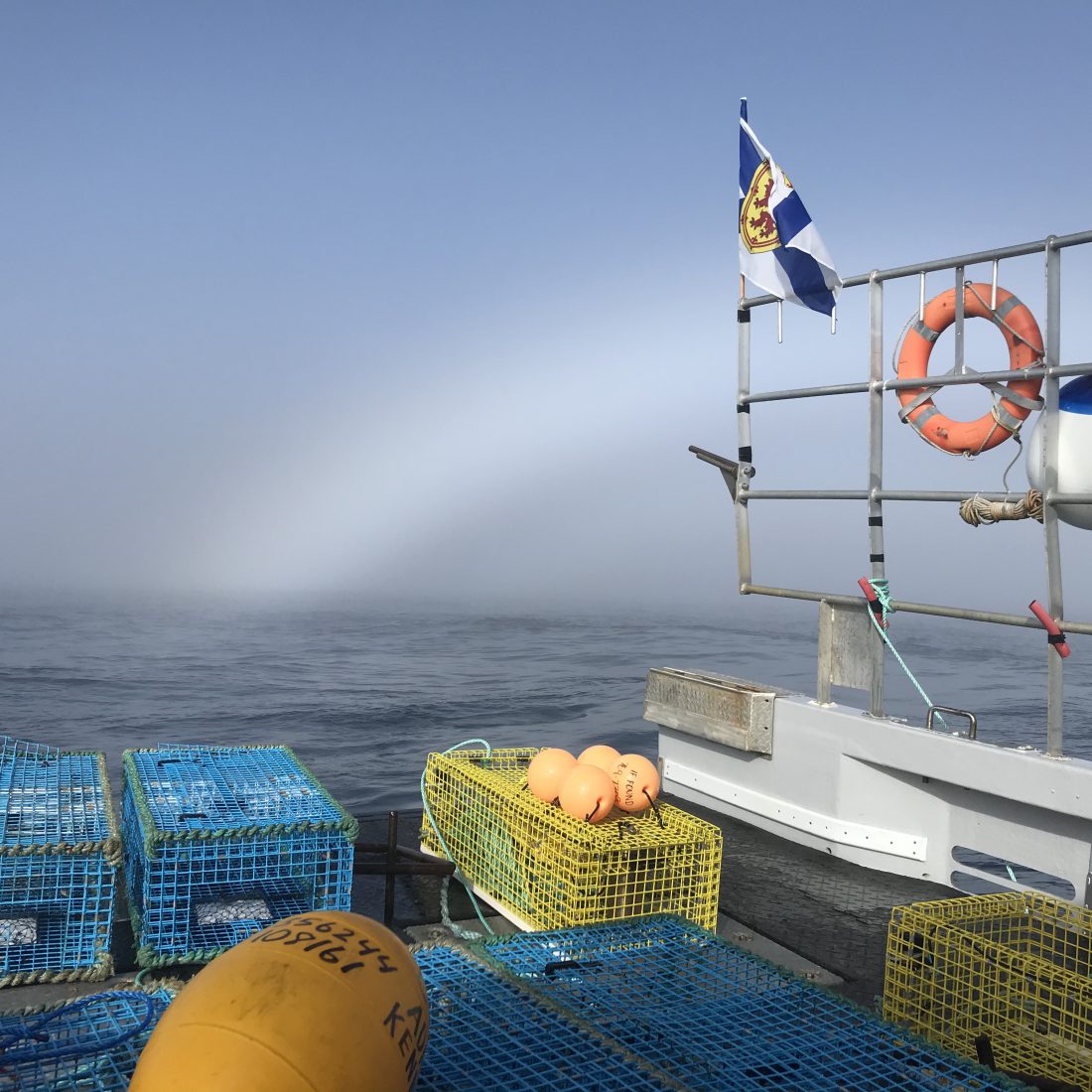
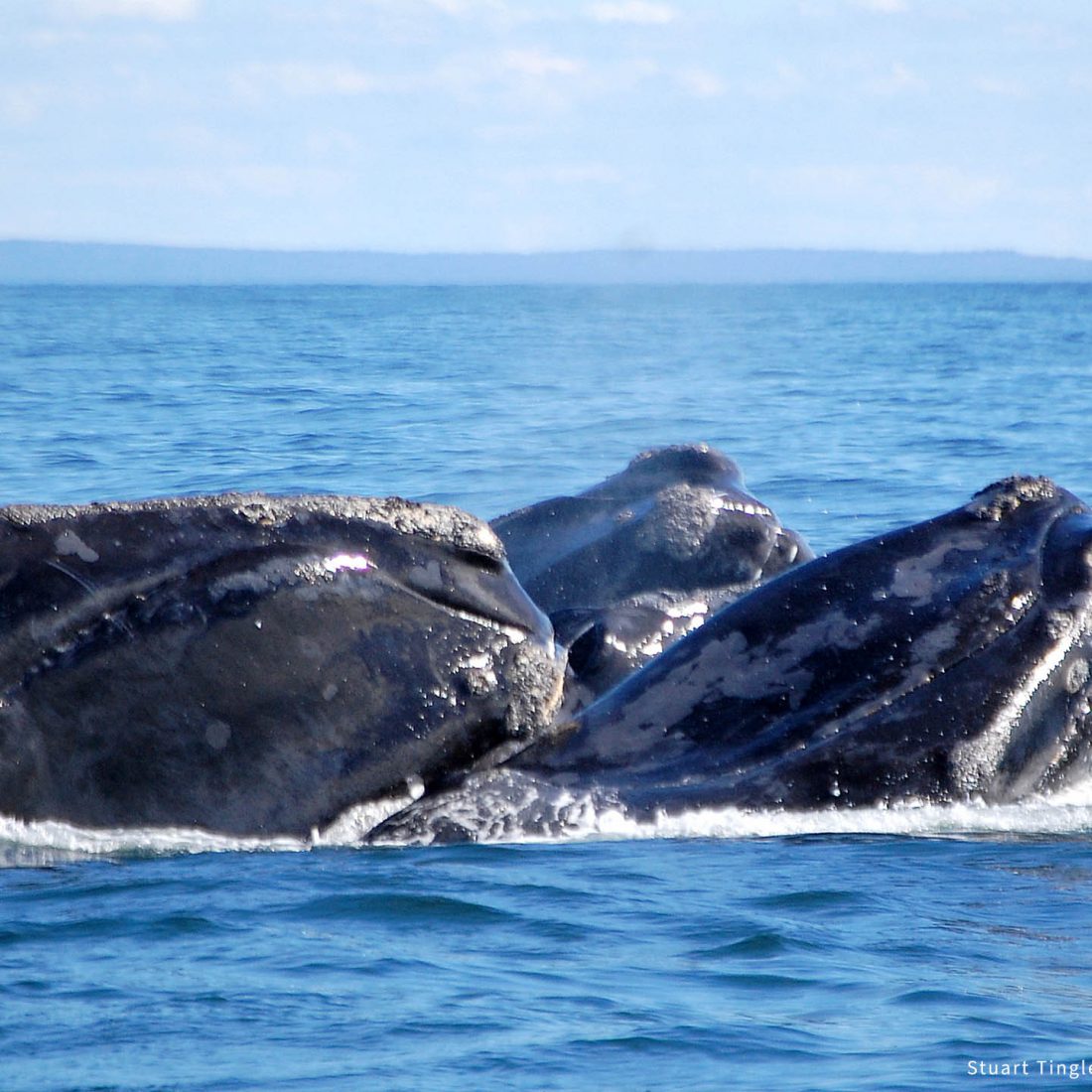

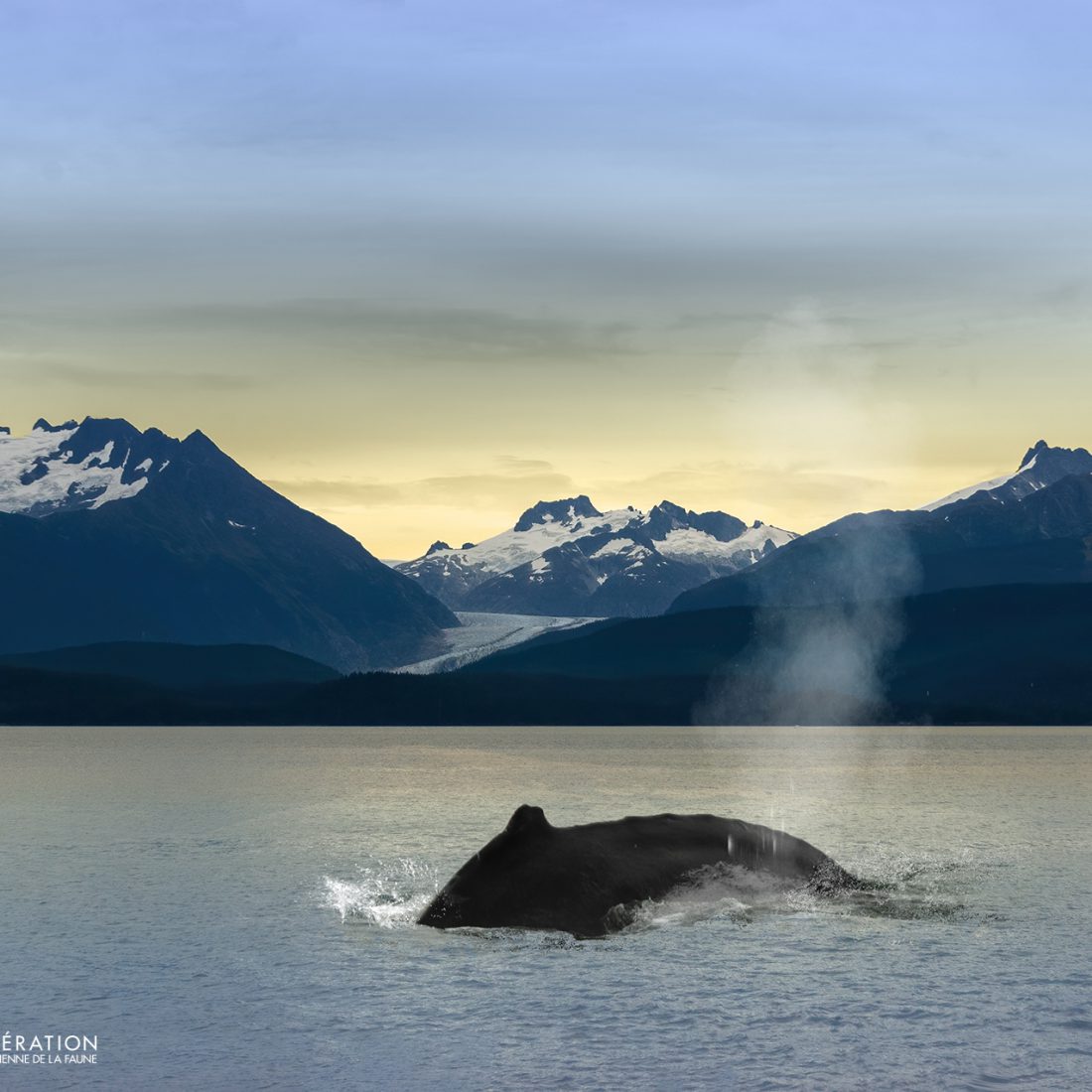

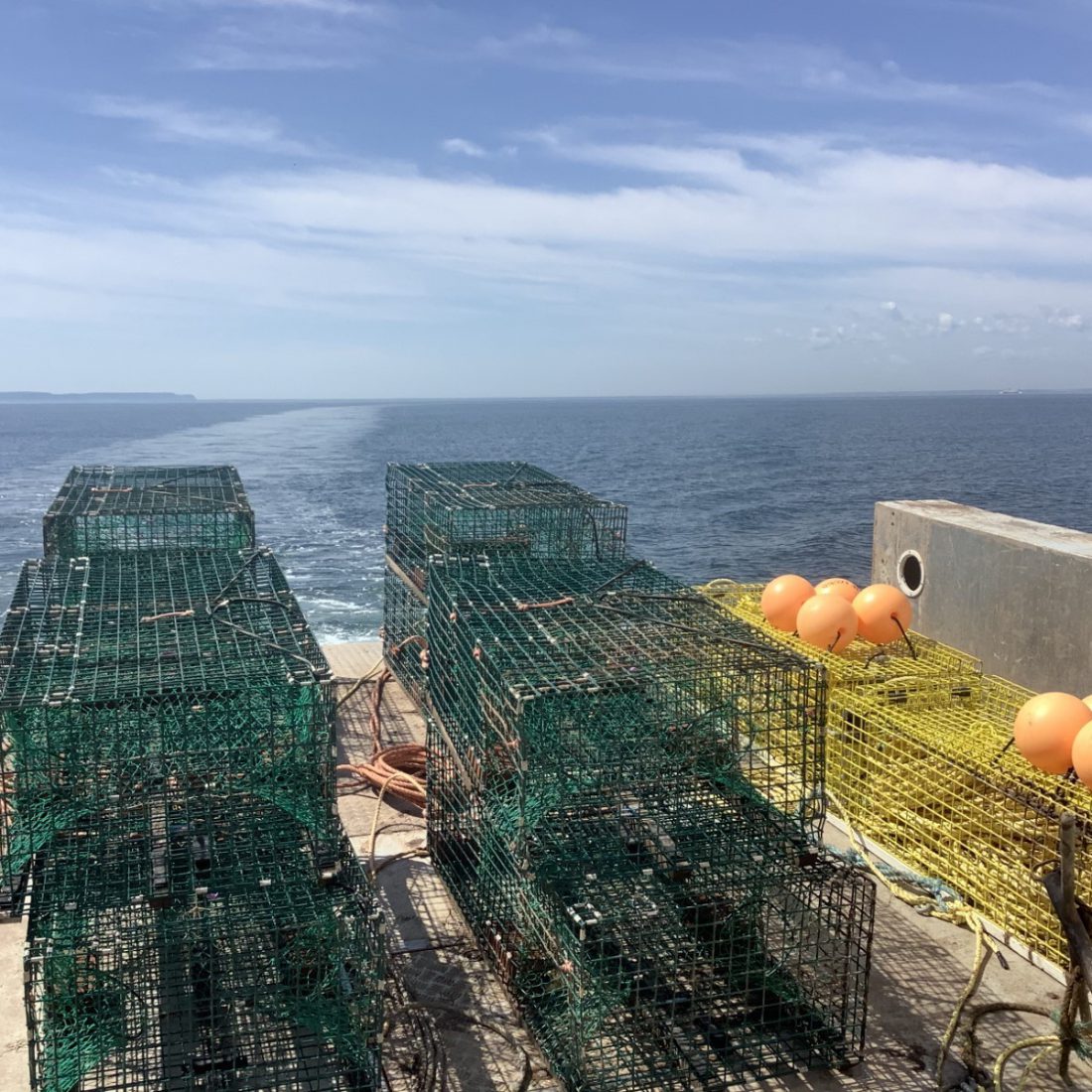
Undertaking a science-based approach to provide key knowledge to support large whale conservation and effective management is the basis of CWF’s marine team. Our team continues to conduct research to understand the threats these animals face and find innovative solutions to these complex issues.
- For a fifth season we have been trialling on-demand (‘ropeless’) fishing gear alongside commercial fish harvesters throughout the Maritimes. We’ve now completed more than 800 trials of nine different systems across a wide range of environmental conditions. Our scientific findings and feedback from the harvesters are shared with gear developers as they continue to improve this technology for fisheries.
- We have been closely collaborating with colleagues from the US and Canada to help develop standards for gear location marking technology that can be used to replace the function of the buoy when fishing with on-demand gear. Once this standard is finalized and approved by regulators this winter, technology developers will be able to move forward in creating a solution to this barrier to on-demand fishing.
- We are continuing to monitor the elevation of groundlines used between traps in fixed-gear fisheries, with specific focus on on-demand gear being used in fishing areas closed to protect right whales. Currently, sinking groundlines must be used in these areas to mitigate entanglement risk.
- In 2022, CWF established the CanFISH Gear Lending Program, which provides access to on-demand gear as well as training and support so that commercial fish harvesters can continue to fish in areas closed to traditional fishing gear to protect right whales. This program has been very successful, removing more than 500 buoylines from areas that present entanglement risk to whales.
- In 2022, CWF received $4.4 million from the Department of Fisheries and Oceans Canada (DFO) Whalesafe Gear Adoption Fund to establish the CanFish gear lending program to help recover the North Atlantic Right Whale while sustaining commercial fisheries.
- With this funding, CWF developed and conducted a survey of lobster harvesters to improve our understanding of how they fish, and the different gear configurations used. The results were used to calculate the first estimates of buoyline distribution across 23 lobster fishing areas in the Maritimes, representing over 6000 harvesters. We account for seasonal differences, if a harvester fishes with a single trap (meaning one buoyline per trap), or a string of traps (a ‘trawl’ with two buoylines per trawl), and the depth they fish. This distribution was then used to provide an updated evaluation of entanglement risk to North Atlantic right whales in these fisheries.
- We began an extensive vessel strike risk assessment in the Gulf of St. Lawrence. Our goal is to provide estimates of risk – both as encounter rates with vessels and lethality of a strike to assess if the current management schemes are effective at reducing these risks. Important considerations of this work are the size of the vessel, speed, and number of transits. Preliminary results show that cargo vessels and tankers represent 57 per cent of the annual transits, followed by fishing vessels (15 per cent), and ferries (11 per cent).
- North Atlantic right whales aren’t the only species of concern in Canadian waters, and not the only species that faces threats of entanglements and vessel strikes. This summer we began assessing the distribution of Blue Whales, Sei Whales and Humpback Whales throughout Atlantic Canada to determine if the existing the North Atlantic Right Whale fisheries management measures are also affording a level of protection to these other species.
Learn more about how the Canadian Wildlife Federation is helping conserve Canada’s marine animals >
Monarchs and Pollinators have more Rights of way as they migrate

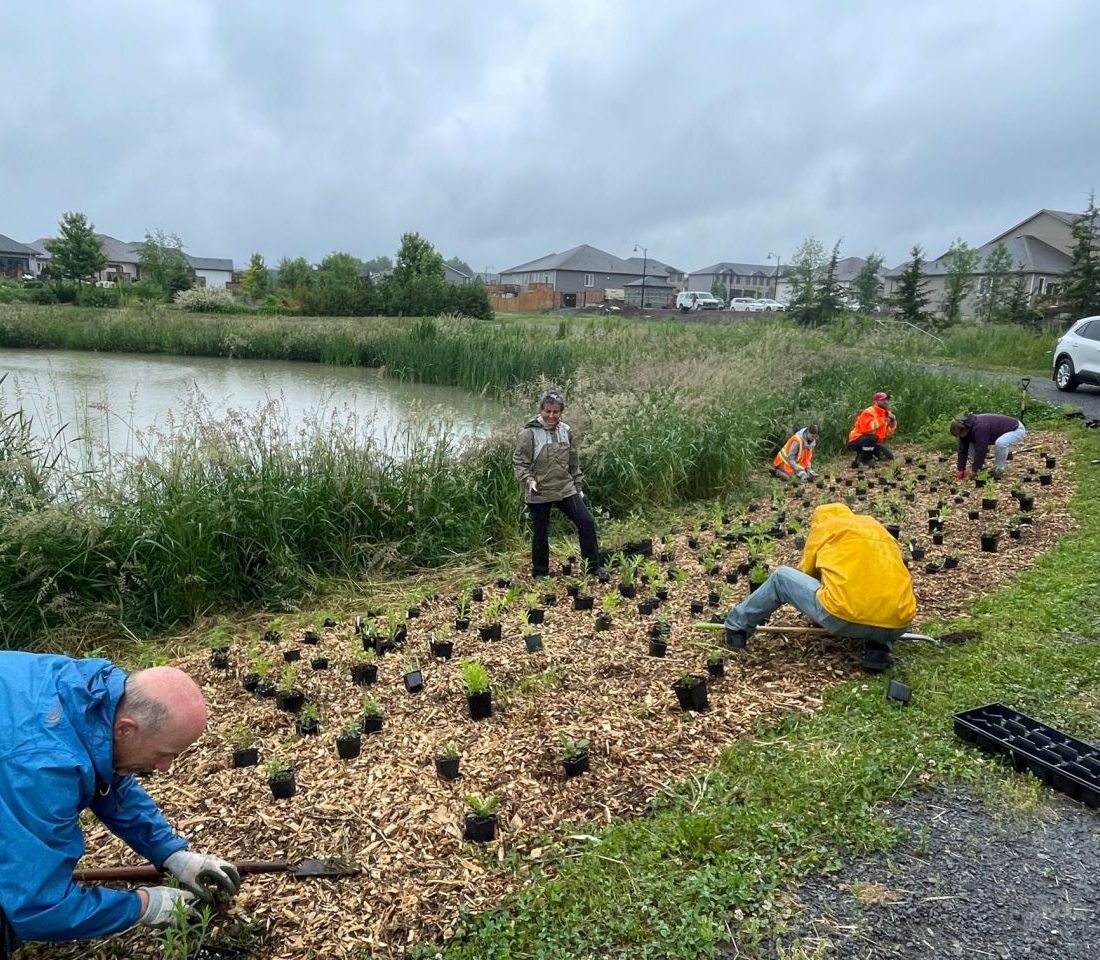
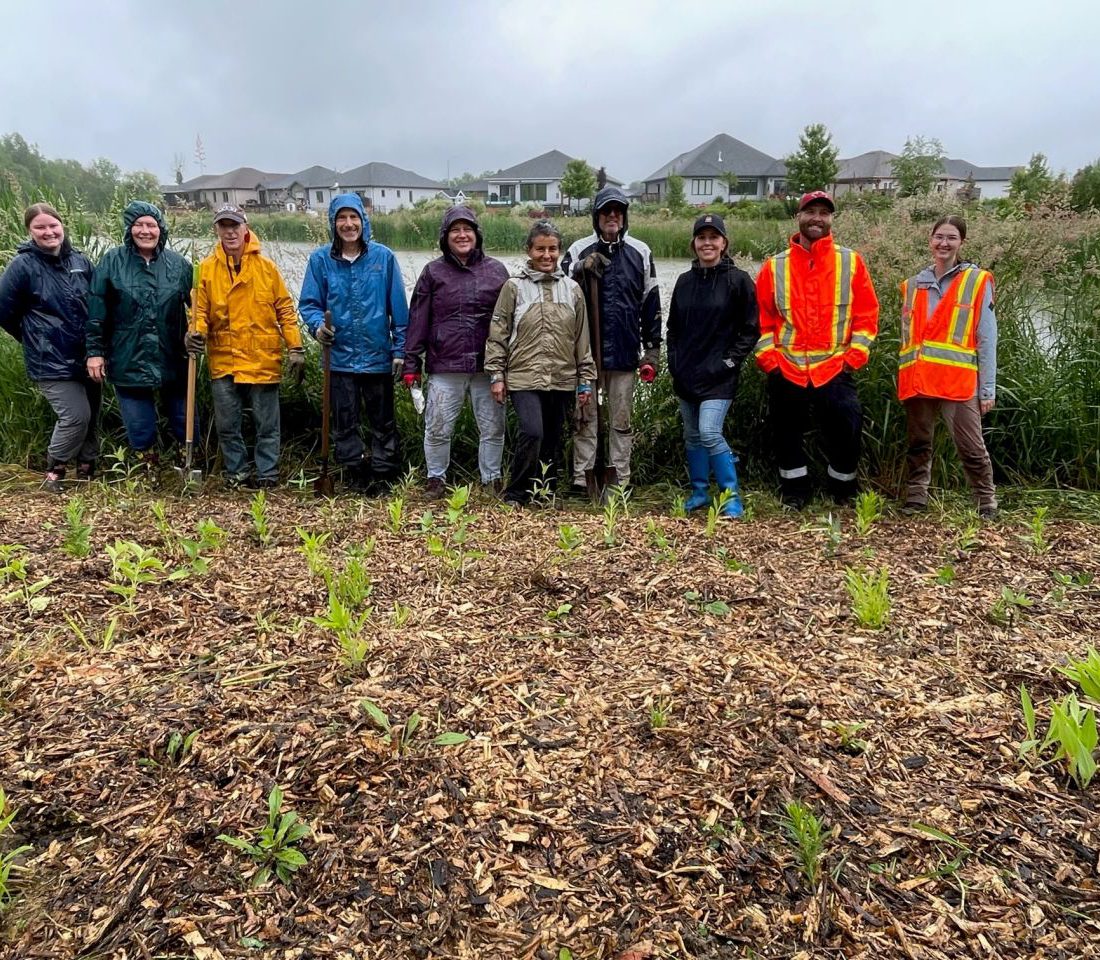
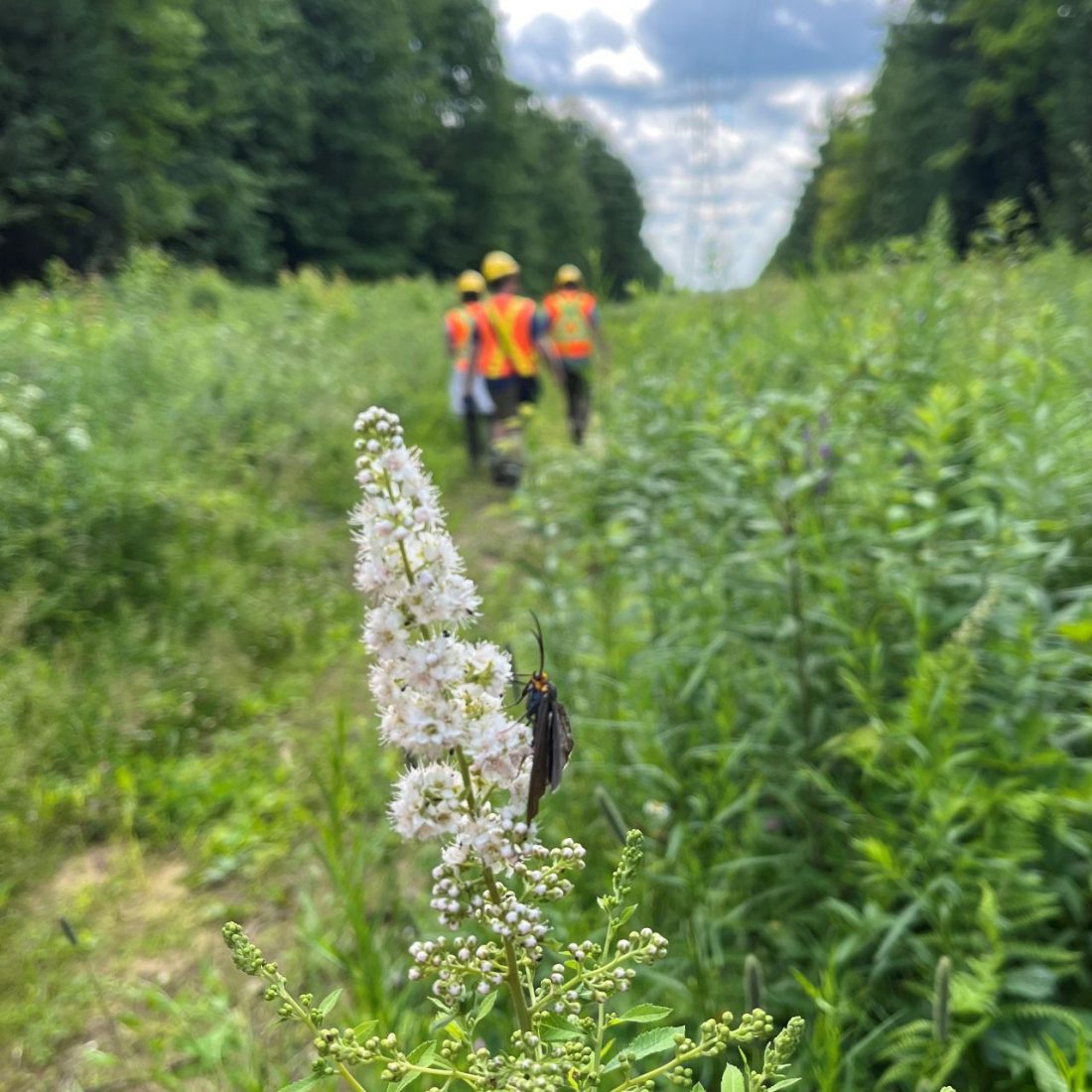
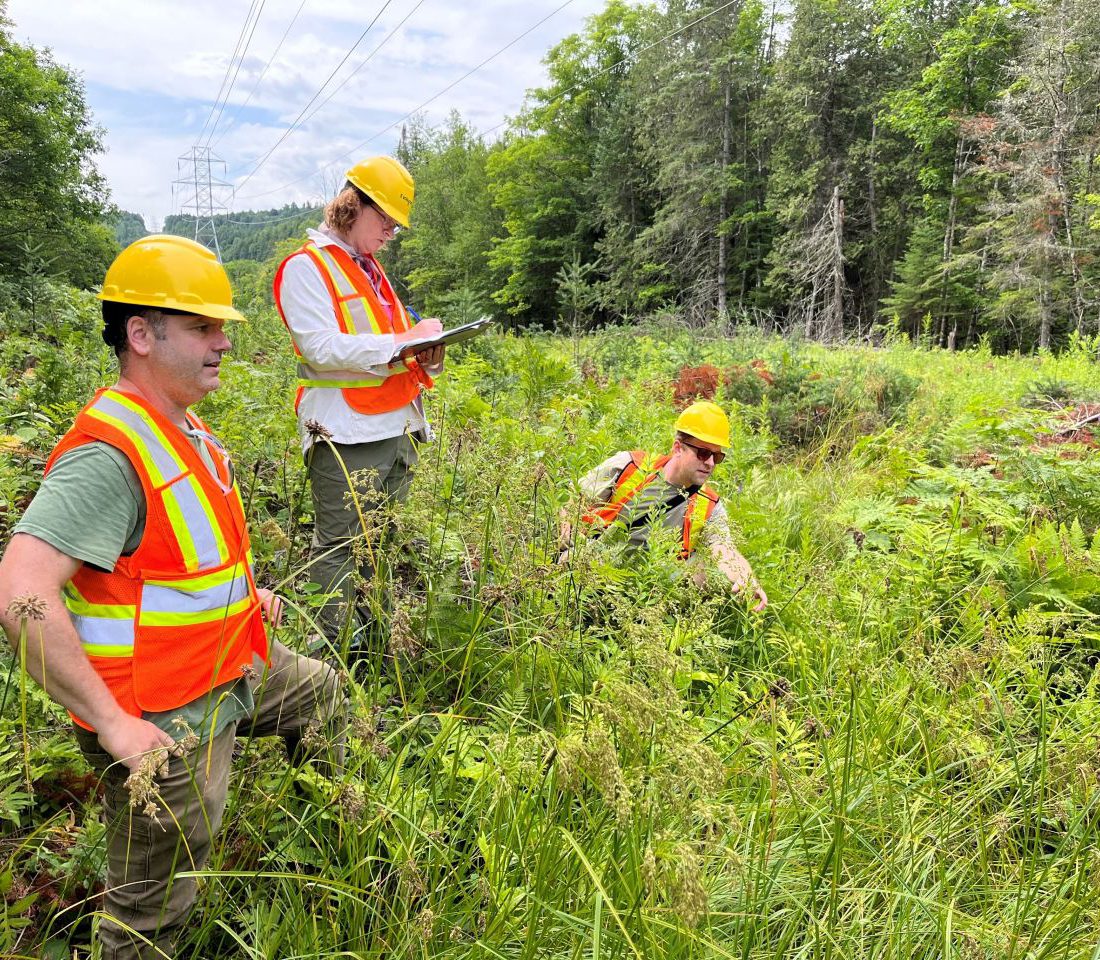
- The Rights-of-Way (ROW) as Pollinator Habitat Restoration team has been working in collaboration with partners across eastern and southwestern Ontario to restore native wildflower meadows as pollinator habitat on ROW. The team has provided hands-on training and guidance to ROW managers on vegetation management practices that will benefit pollinators and biodiversity. Throughout the season they conducted field surveys to evaluate pollinator habitat quality with ROW partners. They surveyed both insects and vegetation on roadsides in various conditions to help inform best practices in restoration. Rights-of-way managers across Canada can join our growing network.
- In the late summer and early fall we surveyed Monarch Butterflies on their migratory path across Ontario through the Monarch Ambassadors project. Members of the public were invited to go out in nature to search for monarch roosts and conduct point counts providing key insight in migratory behaviour.
- CWF is embarking on a new three-year partnership with the 407 ETR to support municipalities along their catchment in restoring pollinator habitat along roadsides within the GTA.
Thanks to funding from the Ontario Trillium Foundation, and the support of many partners our Rights-of-Way Habitat Restoration program is leading the way to support new ways of approaching vegetation management.
Learn more about how the Canadian Wildlife Federation is helping conserve Canada’s migrating pollinators >
Freshwater Turtles Have an Increased Chance at Survival
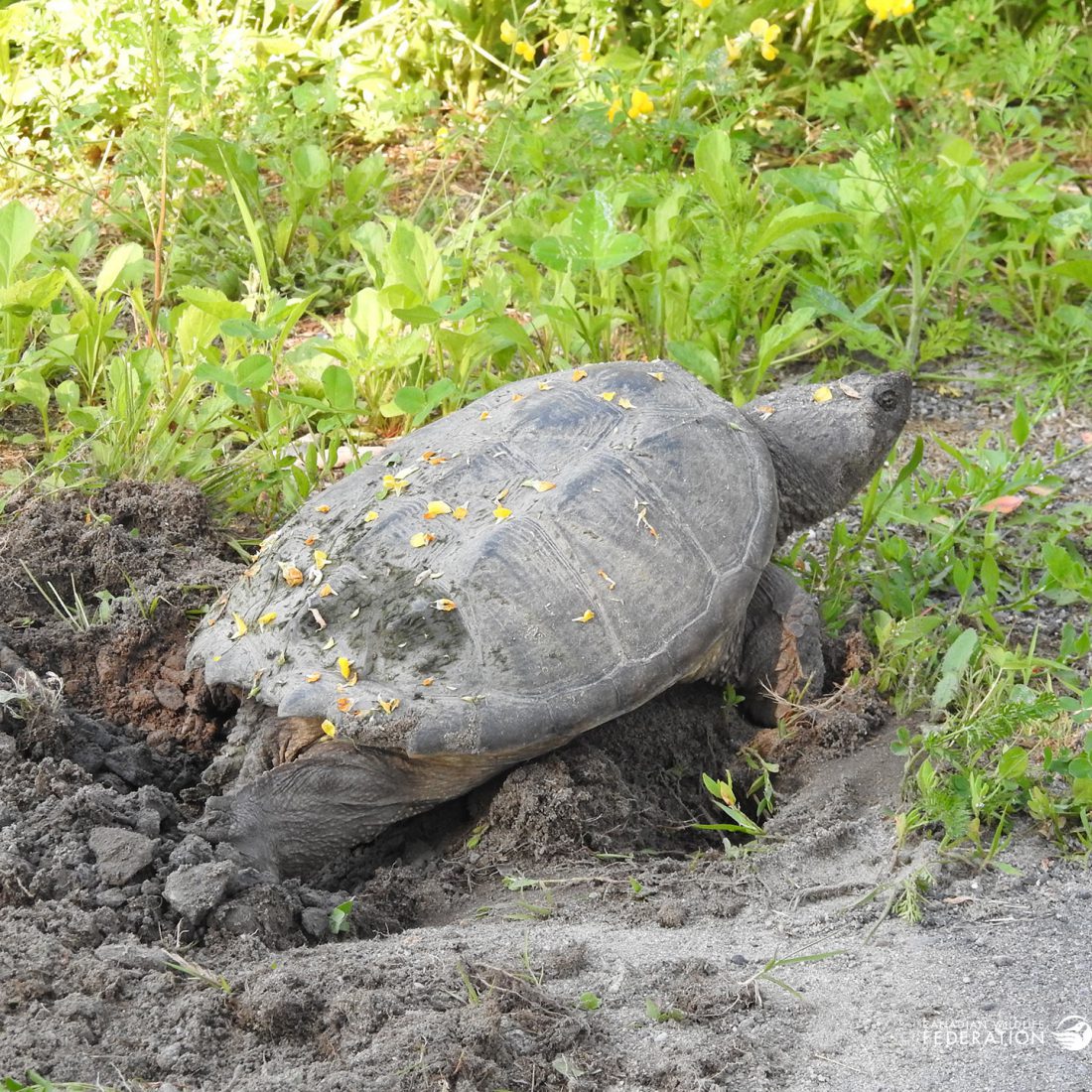
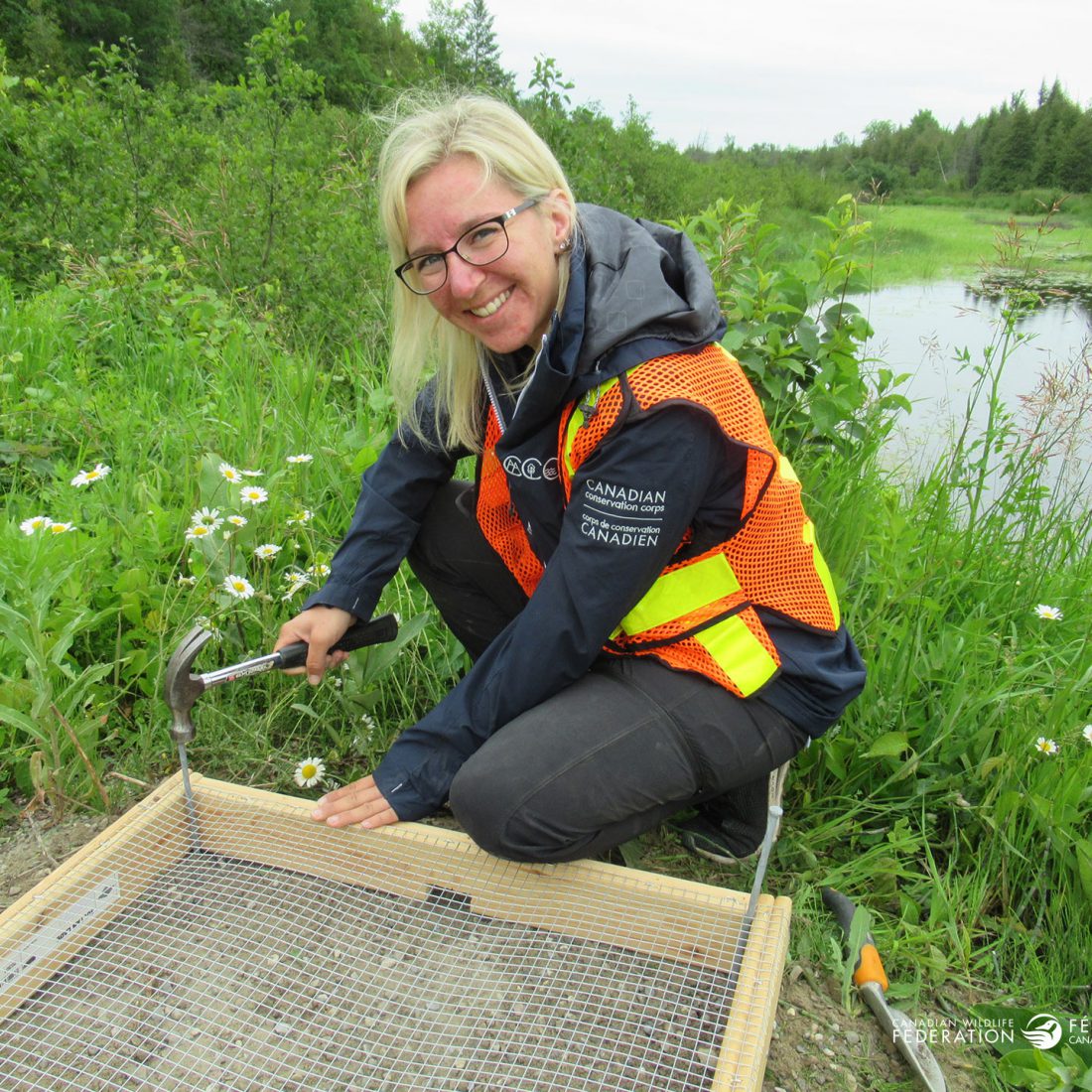
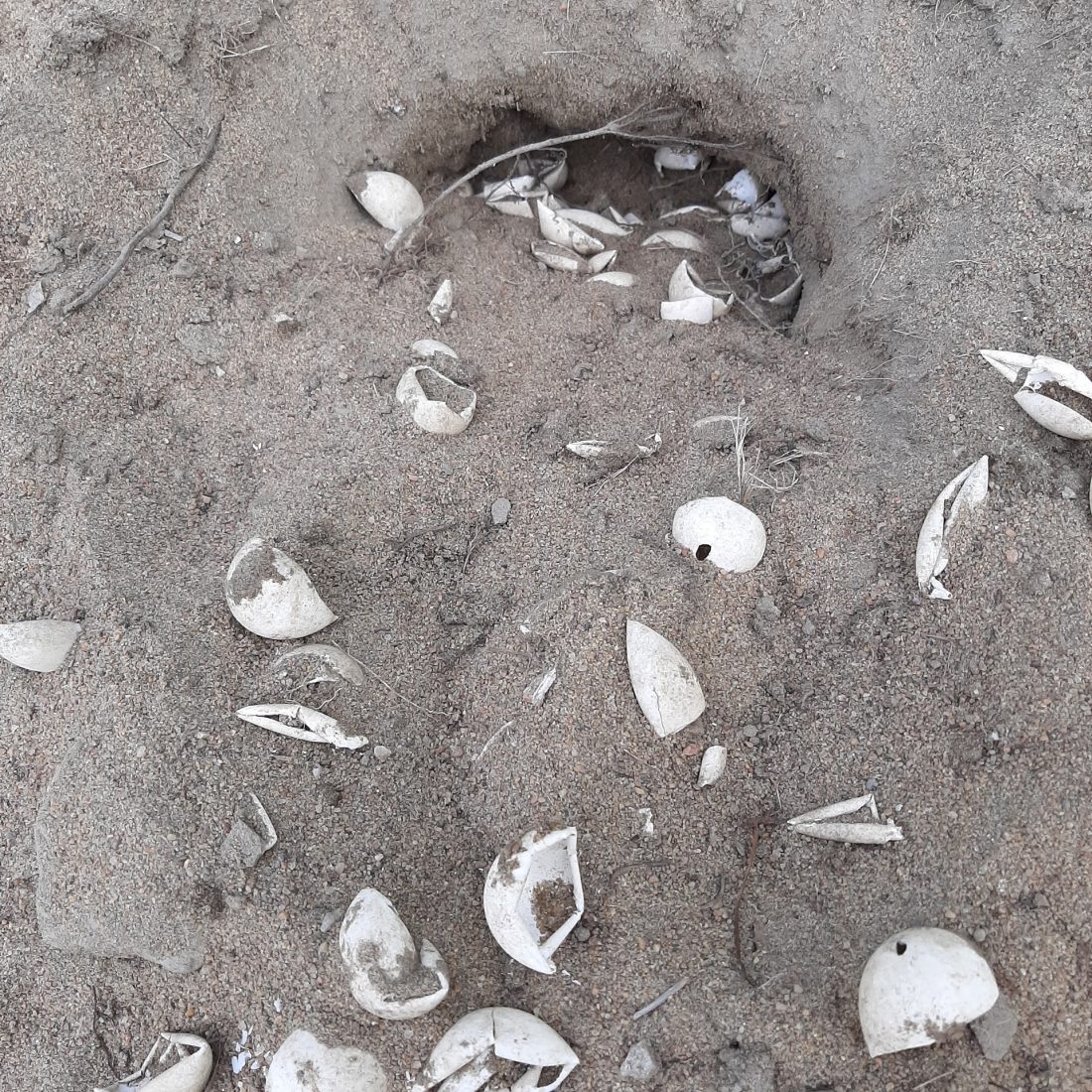
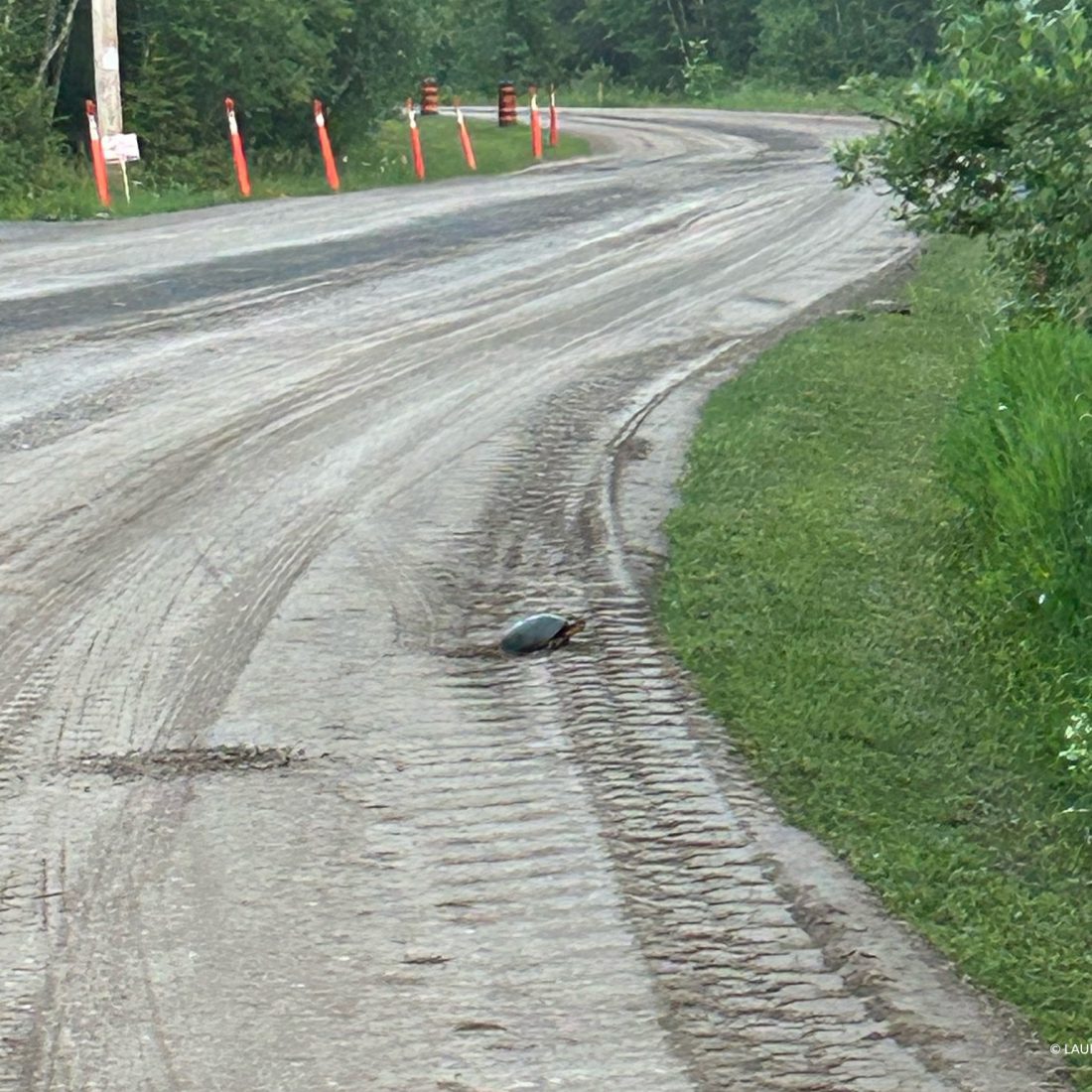
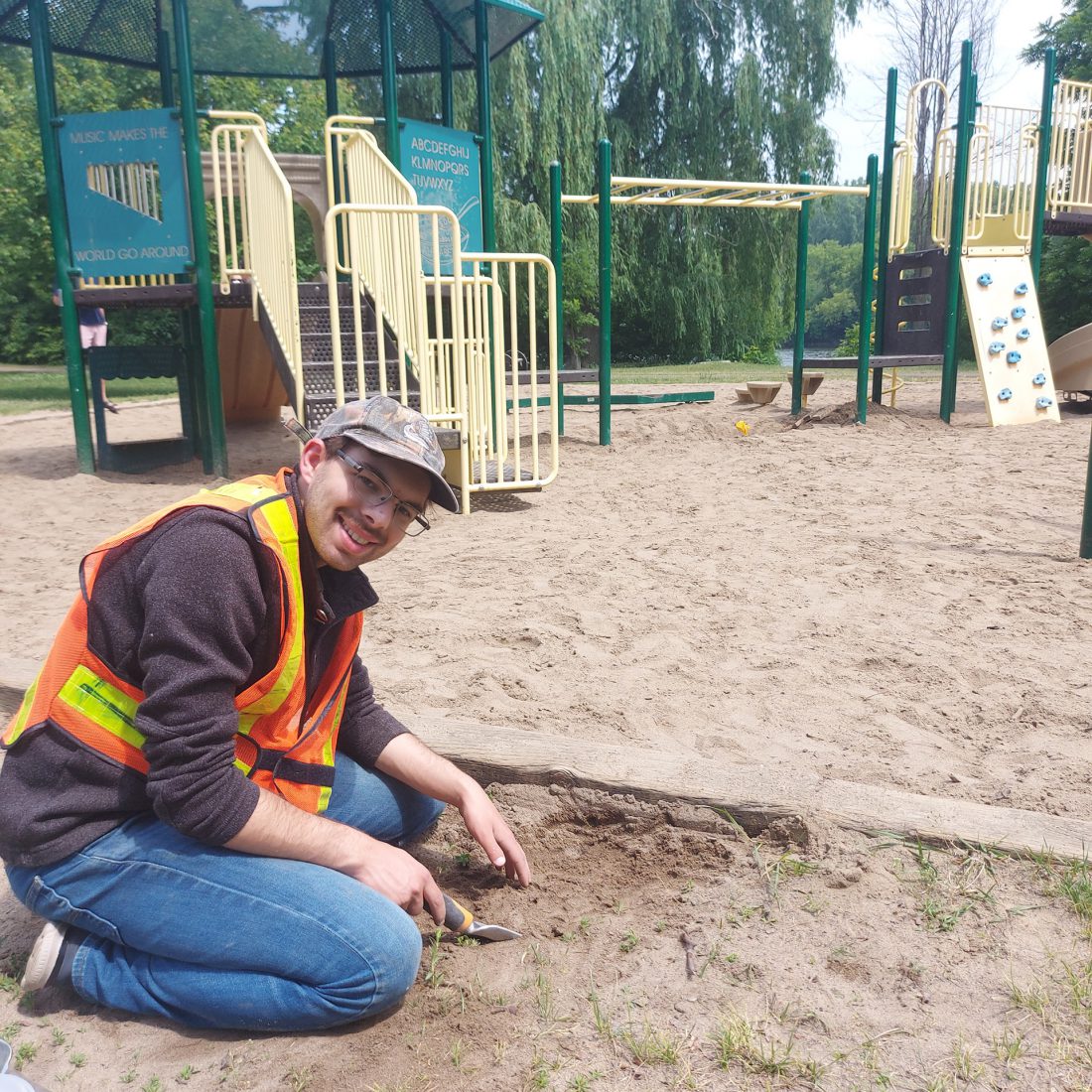
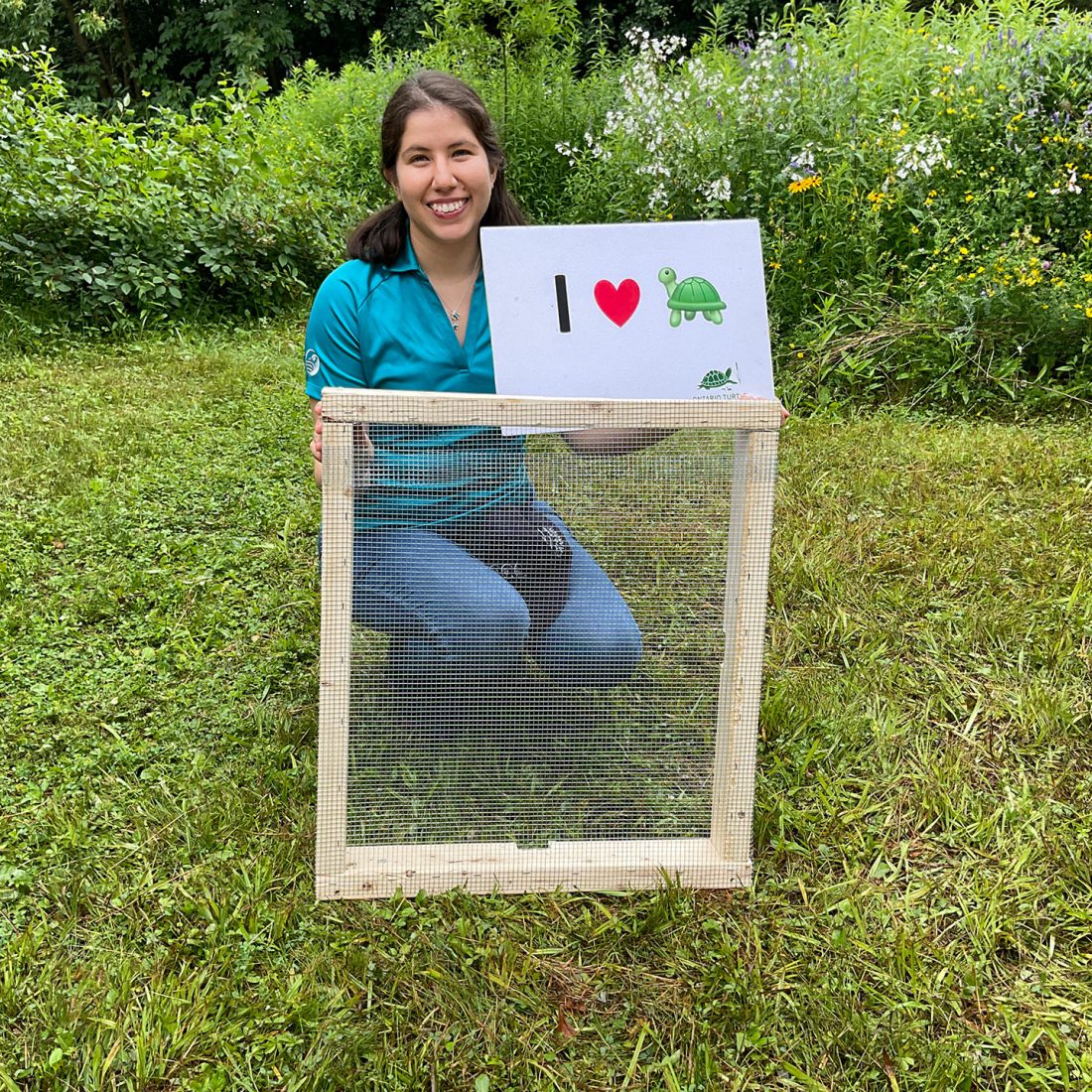
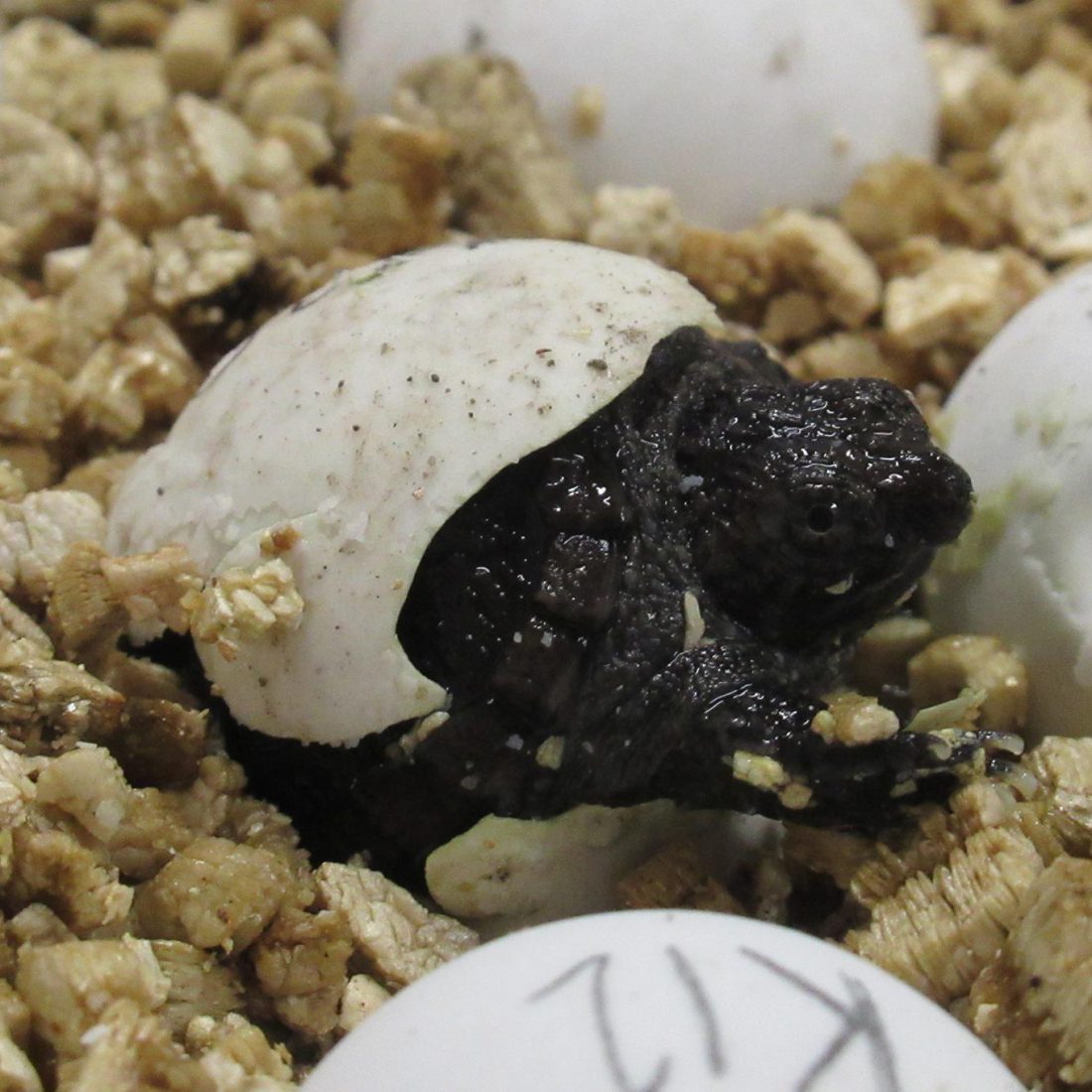
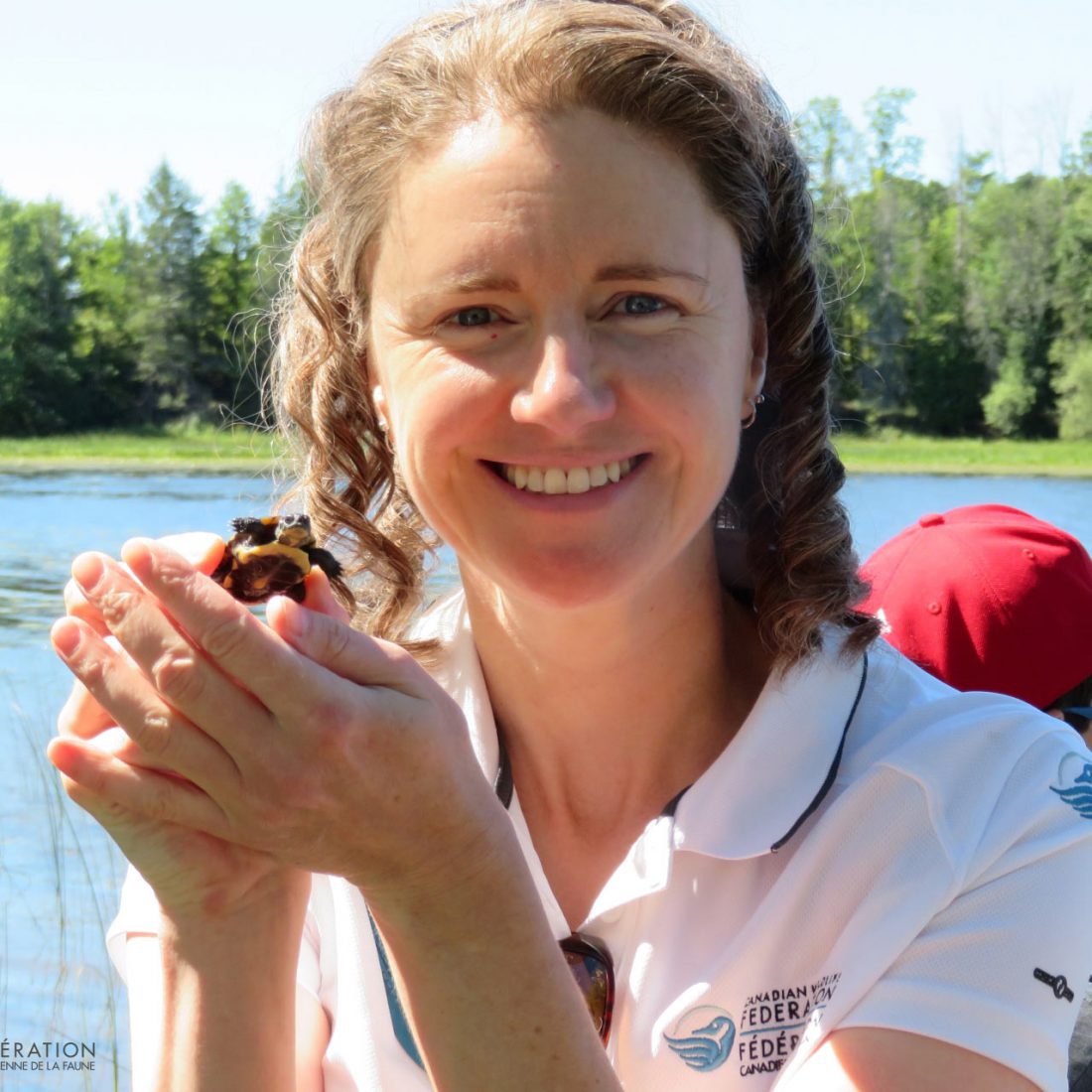
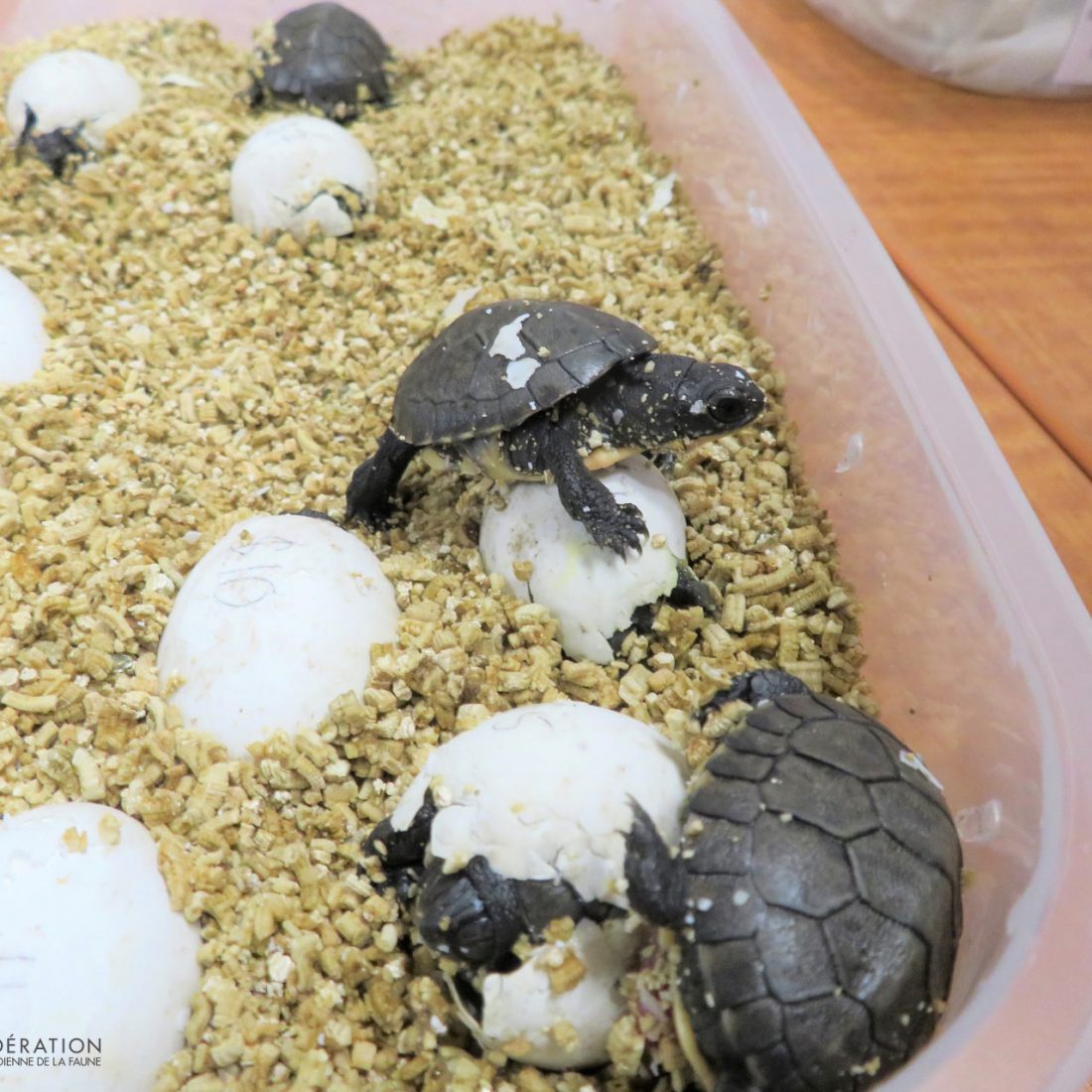
The CWF turtle team was busy again in 2023.
- In spring we conducted surveys for the endangered Blanding’s Turtle to try and find them in previously undocumented areas. Each observation in a new area results in additional habitat protection for that wetland and adjacent wetlands. We found Blanding’s Turtles in several new areas and this will protect more wetlands for the turtles and the other species that depend on those habitats.
- We also collected and incubated more than 1,000 turtle eggs this year. Released hatchlings included Snapping, Blanding’s, Painted and Northern Map Turtles.
- In addition, we also installed more than 20 nest protectors on nests that were at high risk of predation, protecting more than 600 additional turtle eggs.
Funding for this project was provided by the Government of Ontario, Adler & Lipkus Foundation, Honda Canada Foundation and the Rogers Foundation.
Learn more about how the Canadian Wildlife Federation is helping Canada’s at-risk turtles >
We’ve reached thousands of educators and given them tools to teach conservation to our youth
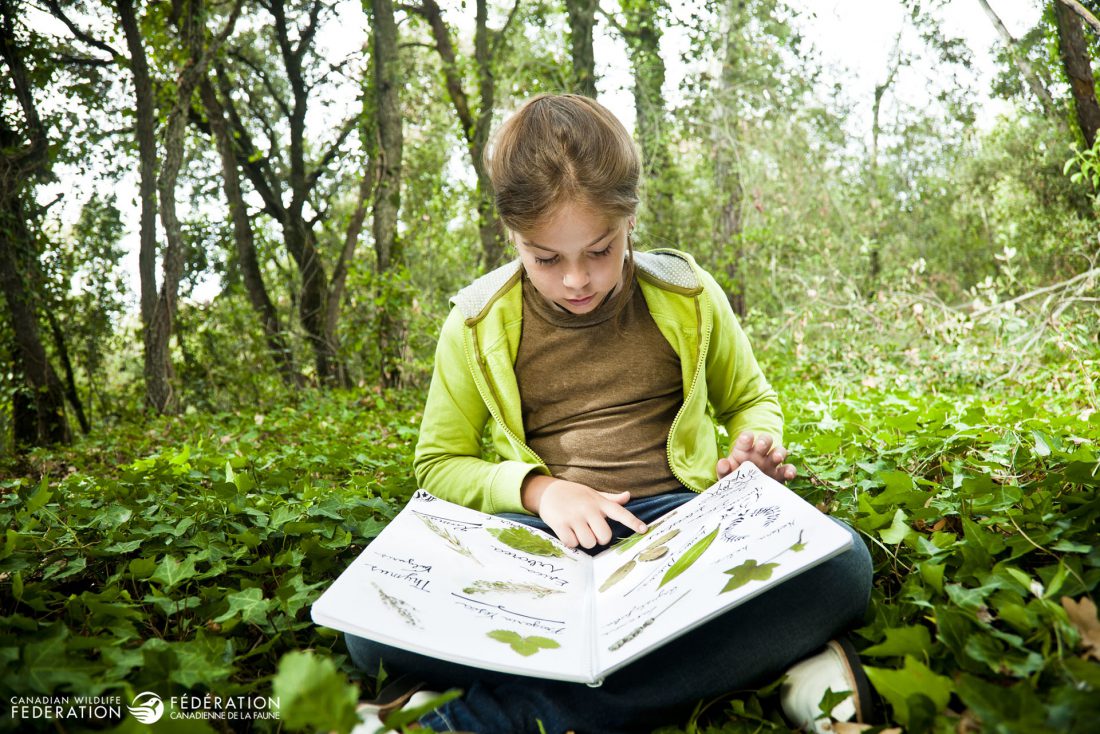

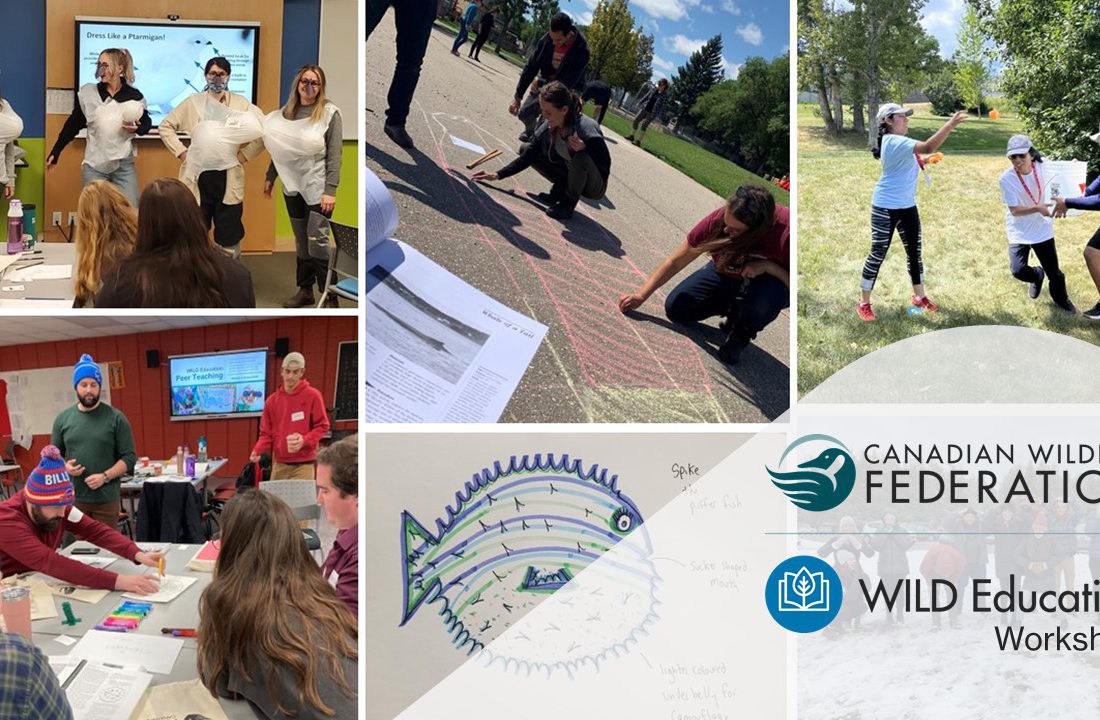


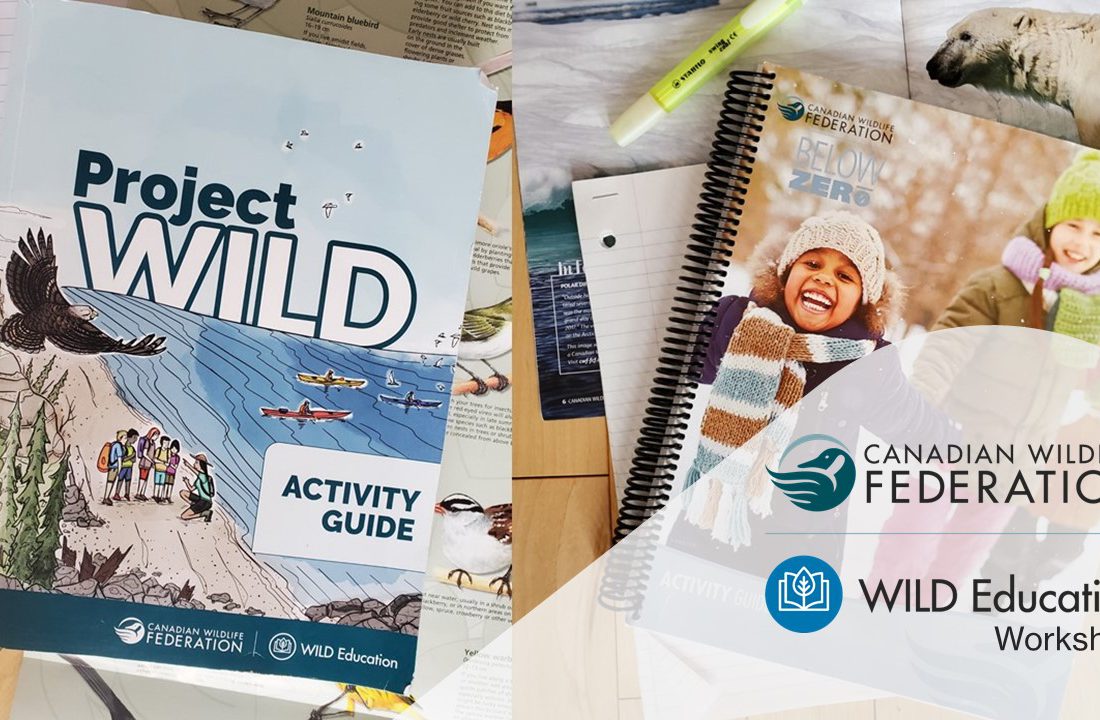
CWF’s WILD Education is a professional development program that trains educators to become certified instructors of Project WILD, Below Zero and WILD about Sports. These interdisciplinary programs provide a toolbox of interactive indoor and outdoor activities to engage youth in learning about and taking action for wildlife and the environment. This year, WILD Education had:
- 1,476 educators that took part in professional development workshops so far this year.
- Three cross-country school webinars held, engaging 3,200 elementary school students (topics included Fashion a Fish, The Buzz on Bees, and School Actions for Wildlife). More are planned for this school year, including a week-long live event series during National Wildlife Week in April.
- Resources in our Online Learning Library downloaded by parents and educators 23,485 times.

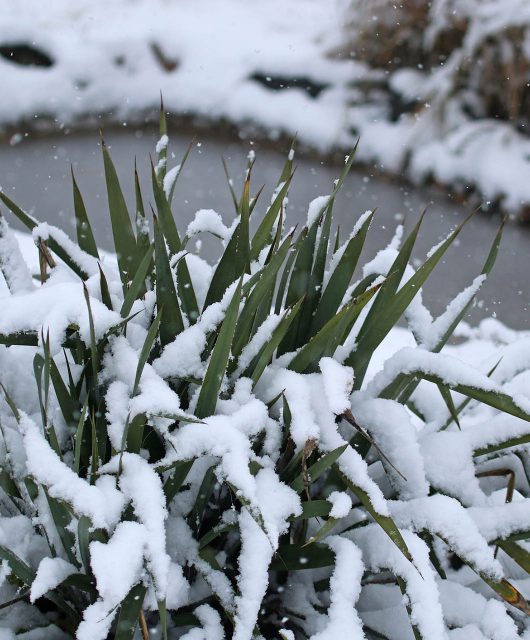
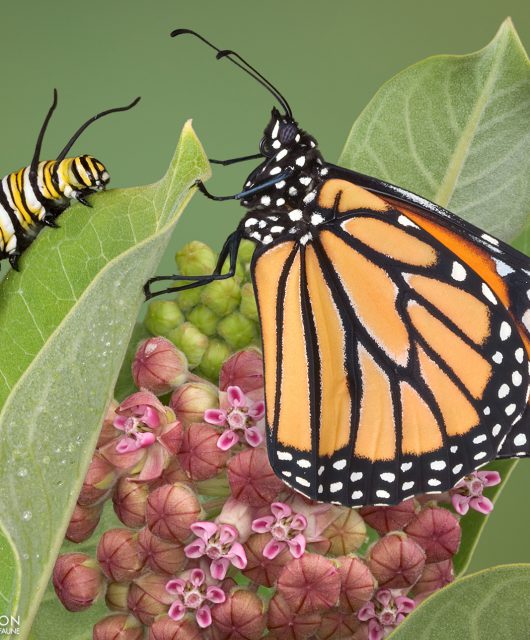
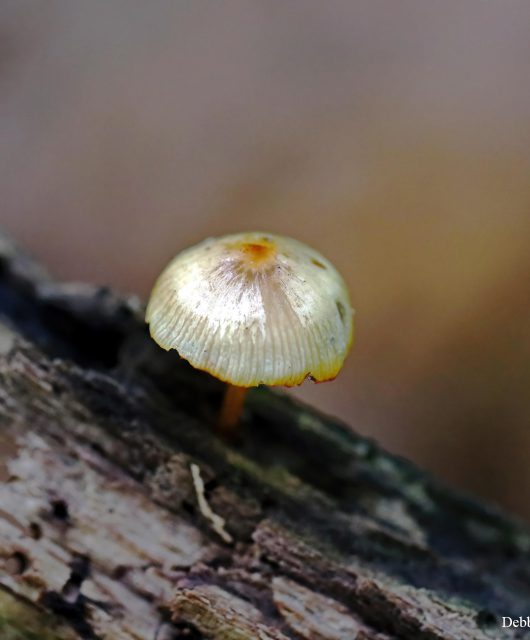
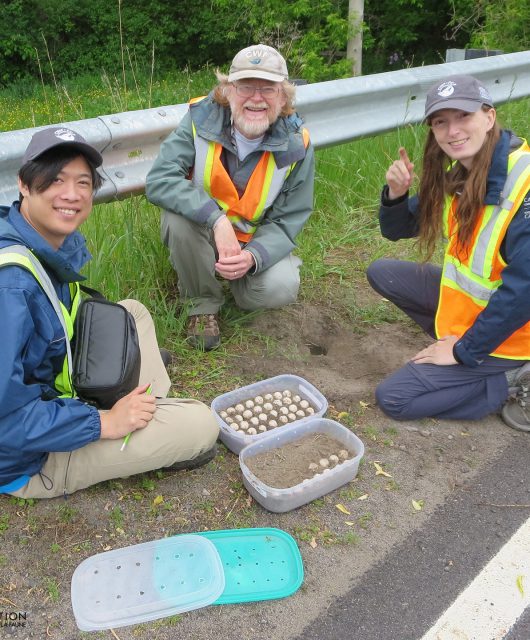
2 comments
Of course, I am happy to see the work that the Federation has done to help and protect wildlife across Canada. There is one thing that is bothering me. My observance is that there seems to be nothing in it for Québec wildlife. As someone who contributes to your efforts and being a resident of Québec, I would have liked to see at least one project being done to help wildlife in this, Canada’s largest province, I am wondering about the reason behind this.
Hi Sylvie
Thanks for letting us know and apologies for this omission. CWF is a national organization with affiliates and programs across Canada. We regret we did not highlight our activities in Quebec.
We have a lot going on in Quebec, but you are right that we failed to include any of it! We’ve made a note to ensure we include this next year but here are a few high-level examples we are currently working on right now in Quebec!
pollinator habitat of Lievre-Quebec Transmission Line
priority areas, developing, implementing, and evaluating best practices, knowledge transfer, and
partnering with Boeuf Quebec and other producer groups for bird conservation.
Primary partners in iNaturalist.ca: Parks Canada, NatureServe Canada (and by association the
Provincial Conservation Data Centres), as well as SEPAQ (Quebec provincial parks), and Espace pour la vie (Montreal),
secondaire
Jean-
Gauthier from Alma